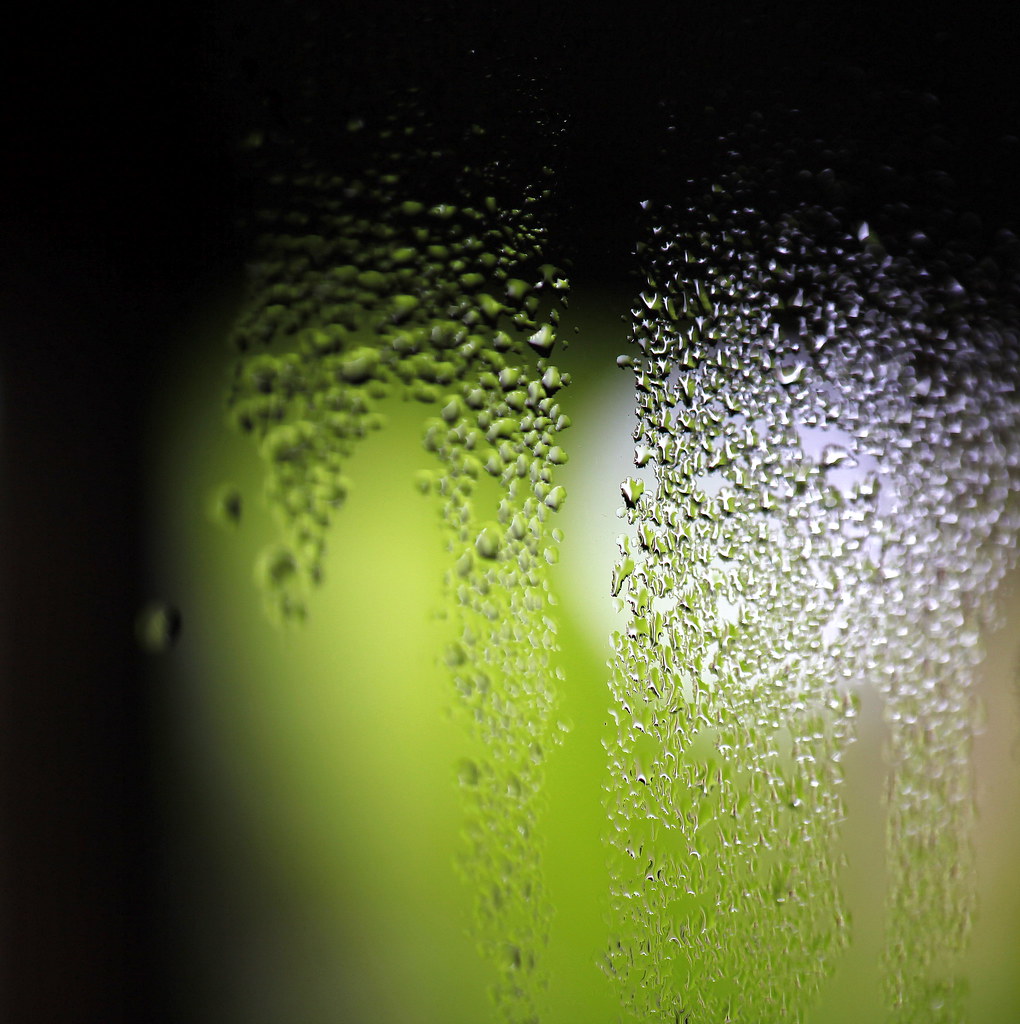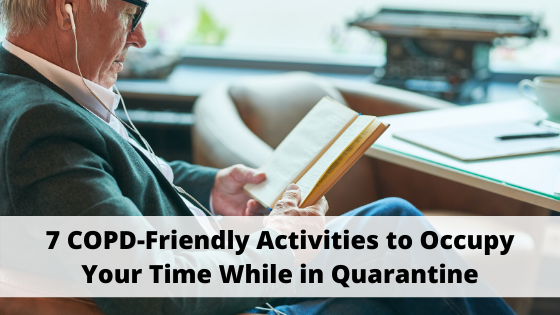
If there’s one thing that we’ve learned from the past couple of months, it’s that self-isolation is never as easy as it seems. While we all acknowledge the importance of maintaining proper social distancing in order to “flatten the curve” and slow the spread of the novel coronavirus, we also need to take the time to consider the negative effects of spending so much time alone.
Someone with a very active lifestyle may enjoy the self-quarantine because it gives them time to wind down and collect their thoughts. But for others, such as those with COPD or other chronic conditions, the quarantine can be a nightmare. Rather than being able to get outside and exercise their freedom, these people are being left at home to cope with their disease alone.
The good news is that there are ways to remedy this. With modern technology and some creativity, it is possible to regain some of the privileges we once had without having to venture out into the world. In this post, we’re going to take a look at 7 different COPD-friendly activities to occupy your thoughts until the COVID-19 situation blows over.
{{cta('b59df0c1-c4de-47a8-8e1c-0d33d4b414aa','justifycenter')}}
The Importance of Staying Busy
Many people looked forward to the quarantine initially, believing it would give them an excuse to stay in their pajamas all-day or get caught up on their favorite show. But reality hit these people hard once they found out that it’s not so easy to make it through the day with a lack of things to occupy their thoughts.
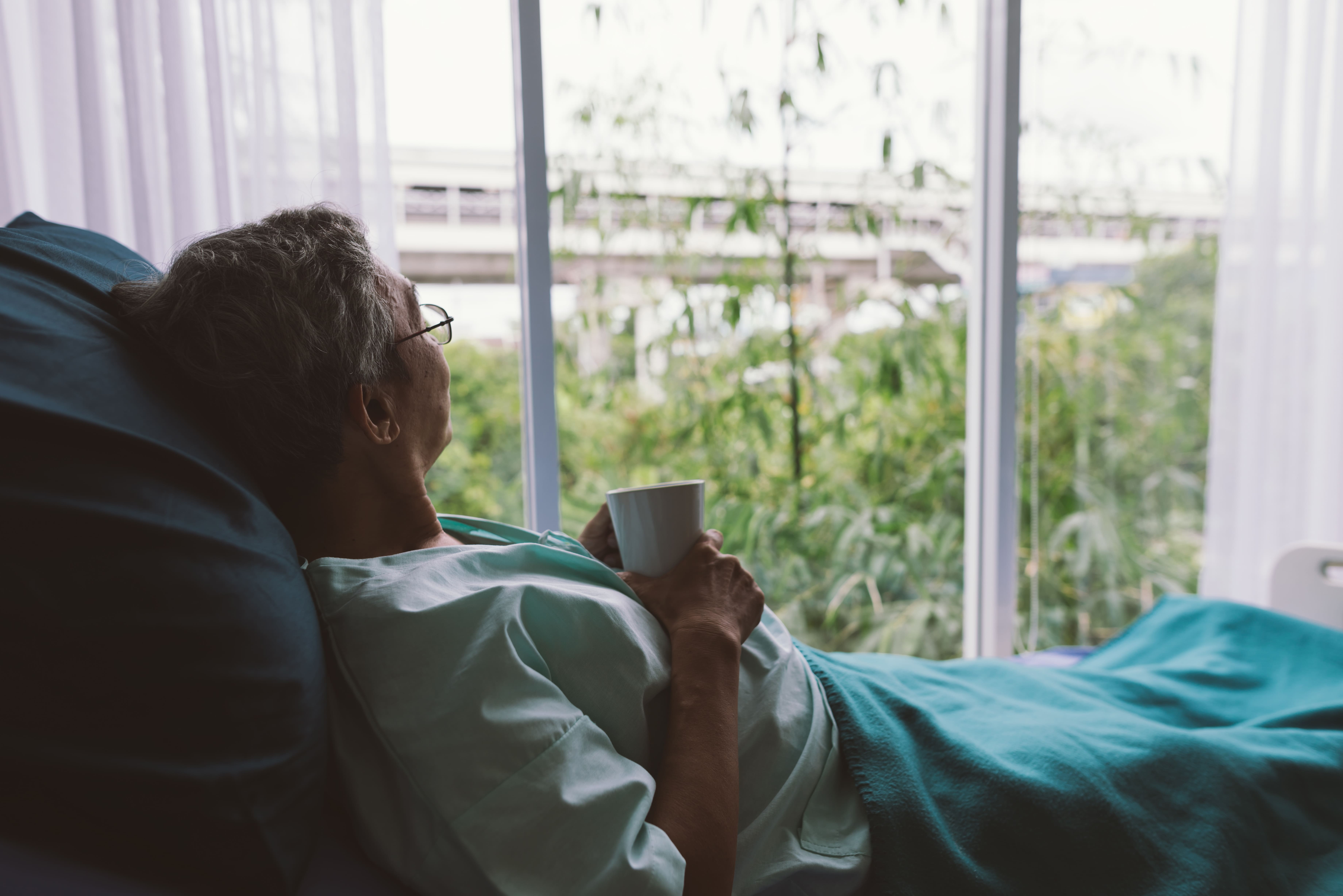
Unfortunately, self-isolation isn’t a new concept by any means; people have suffered from loneliness and social isolation for decades, and it’s taken a significant toll on peoples’ general happiness and well-being. According to a study published in the Oxford Academic Journal, 24 percent of older adults (65+ years) were considered “socially isolated.” Ultimately, this puts people at a higher risk of experiencing loneliness and other related conditions like anxiety and depression.
While hobbies and other day-to-day activities won’t completely eliminate loneliness, they will help to occupy your thoughts in your downtime. You might still have friends, family members, or caretakers who still come to visit you even during quarantine which can help combat some of the loneliness you may experience.
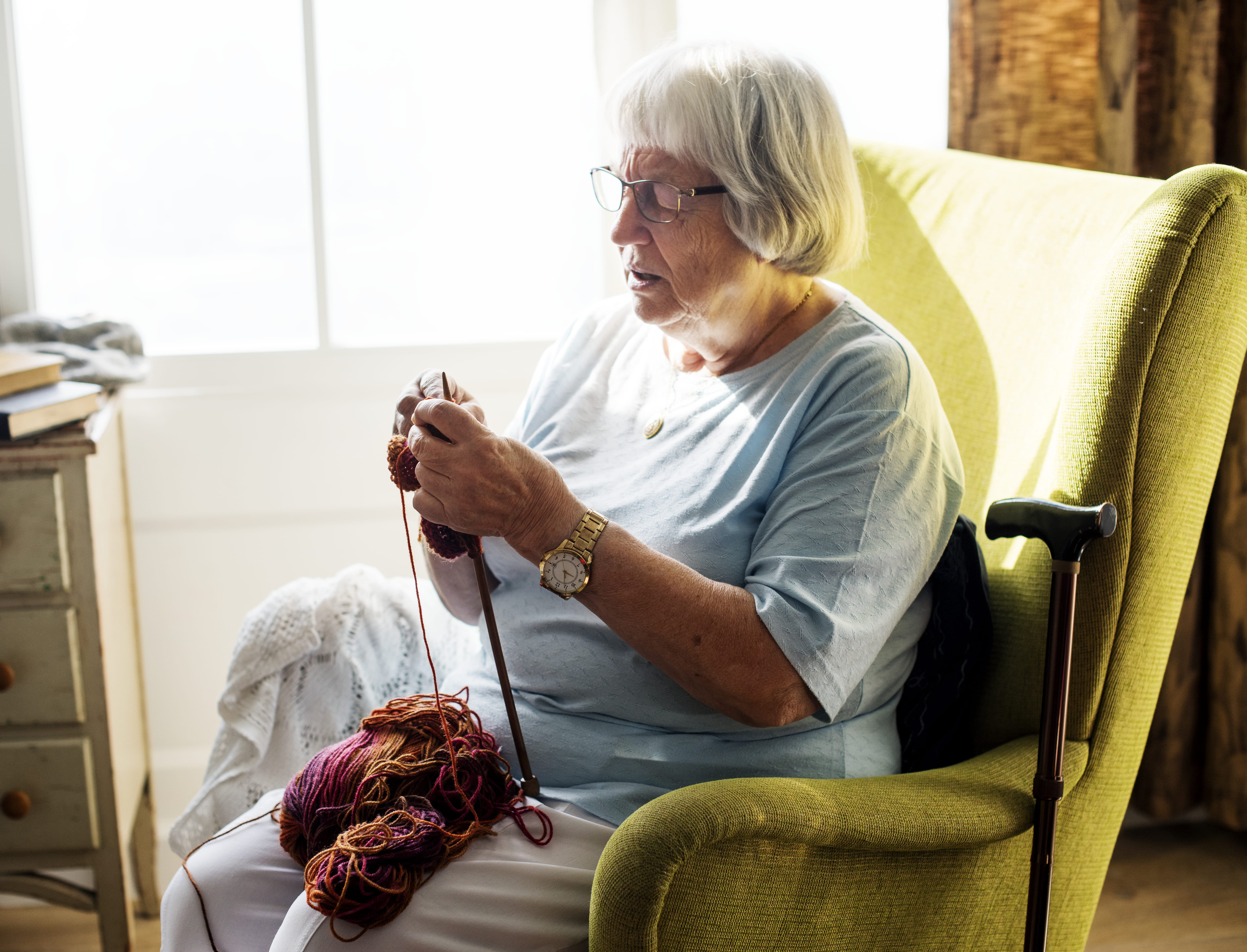
Another reason hobbies are so important is that they take your mind off your disease. If you maintain a sedentary lifestyle for too long, you’ll start to focus more on the negative outcomes of your disease. Eventually, this can lead to a vicious feedback cycle that causes you to over-exaggerate the severity of your condition. Not only could this take a toll on your mental health, but it could cause you to make irrational decisions that you wouldn’t otherwise make.
Last but certainly not least, hobbies help you to grow as a person. No matter your age or health condition, hobbies can provide you with an outlet to express your interests and learn. What’s more, it will give you more to talk about once you’re finally able to start reconnecting with people after the situation with the coronavirus starts to slow down.
Create a List of Priorities
One thing you should do before learning about COPD-friendly activities is to start working on a priority list. For many people, being at home more often can throw off your sense of direction and even cause you to lose sight of priorities that you used to keep.
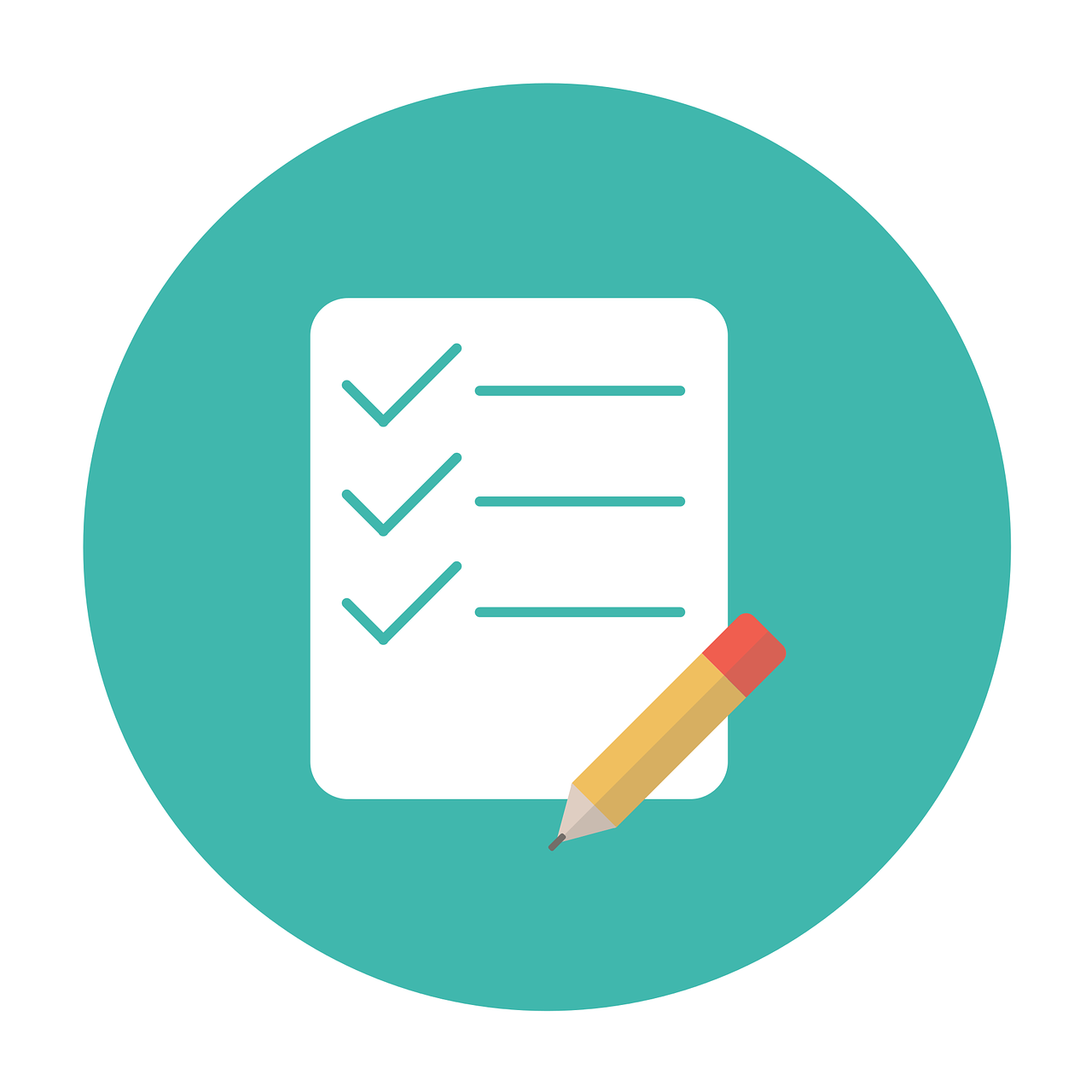
Many people have trouble maintaining a healthy sleep schedule. If you’re inside more often or you’re not exercising as frequently, your circadian rhythm could be completely thrown out of whack making it increasingly difficult to follow the sleep schedule that you used to.
If you’re concerned about this, try prioritizing hobbies that get you moving and allow you to get a healthy amount of sunlight each day. In turn, you’ll experience less restless nights and you’ll be able to stay focused on things that you’re trying to accomplish. As you read through the following list, take note of things that are important to you and structure your hobbies accordingly.
1.) Reading
Reading is quite possibly one of the most important things you can do while in quarantine. It’s one of the best ways to pass the time, foster creativity, and learn about something new. According to researchers, reading regularly can even increase survival rates among adults and the elderly.
Possibly the greatest benefit of reading a physical book is that it gets people away from their screens. For the past several decades, many people have set aside physical media in favor of more convenient digital options either via their smartphone, computer, tablet, or an e-book device like the Kindle.

But regardless of the popularity of e-books and audiobooks, physical books still remain the most popular choice for most readers. Simply put, people feel more satisfied with reading a real book because it feels more authentic and relaxing, especially when you don’t have to deal with things like computer glitches or malfunctions.
According to a study published by BMC, time spent using digital devices is associated with sleep disturbances and a higher risk factor for mental health conditions. What’s more, people who used mobile devices saw even worse outcomes. In other words, reading a book on your phone or Kindle could be even worse for your health than reading one on the computer.

Fortunately, physical books provide you with all the benefits of reading without the added risks of using a digital device. According to a study done by the University of Sussex, reading can reduce stress levels by up to 68 percent! Considering that stress is estimated to contribute to up to 60 percent of all disease, this is an extremely important factor to consider when starting a new quarantine hobby.
If you’re someone who prefers reading online articles over novels, consider printing them before reading them. This way you can find someplace comfortable to read it and avoid spending too much time on your computer.
2.) Games and Puzzles
If you want something that will keep your mind busy but aren’t much of a reader, puzzles and games are a great option too. According to Cognitive Vitality, crossword puzzles and other activities help to build cognitive reserve. This, in turn, allows someone to maintain normal cognition avoiding common conditions such as Alzheimer’s disease and dementia.
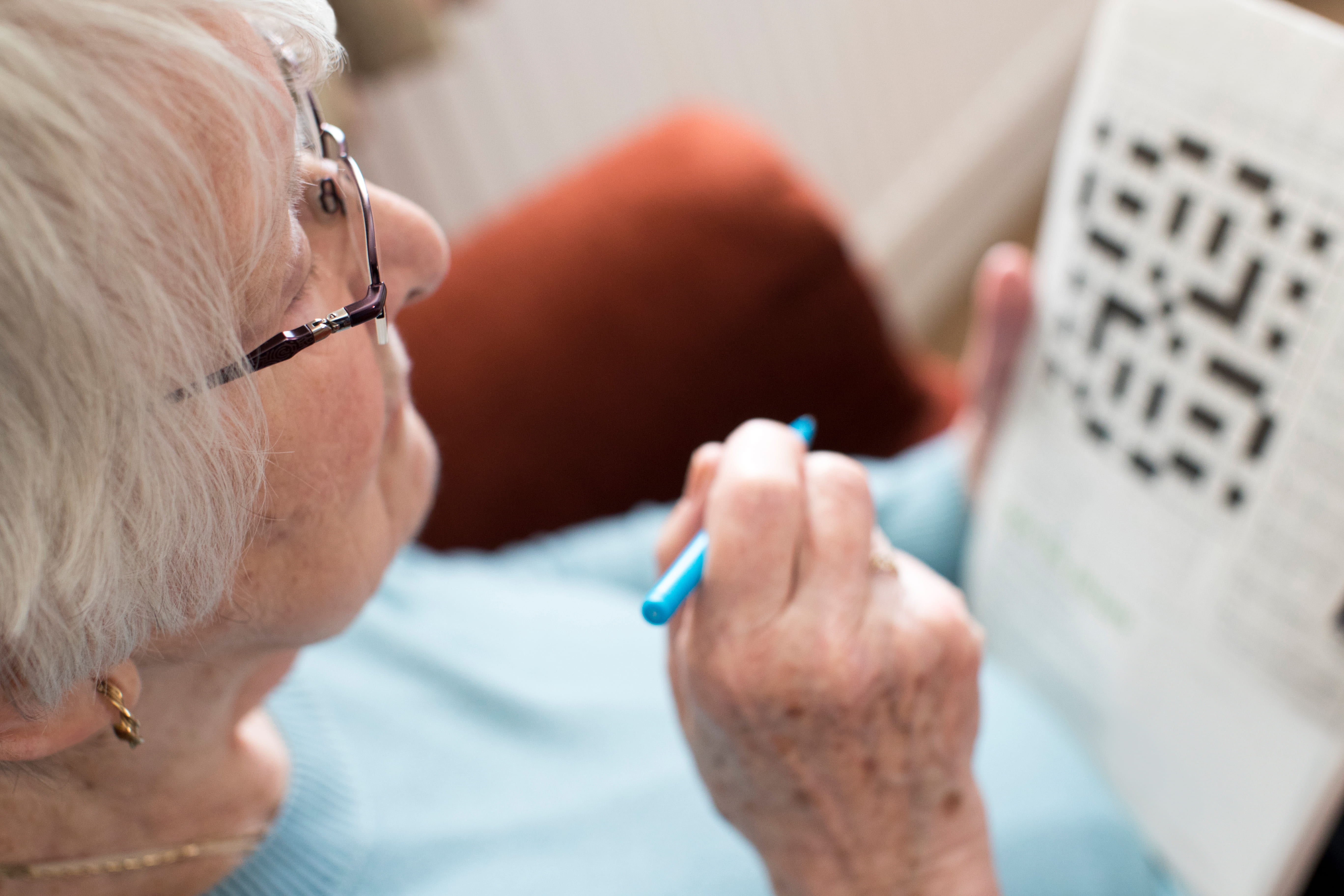
Like reading, puzzles and games can be done without the use of a digital device. Many crossword puzzles and similar games can be found in the back of magazines and you can even find entire books full of different types of games at your local book store or grocery store. This is enough to keep most people entertained for weeks or months on end.
Another great benefit of crossword puzzles is that they can help you maintain your vocabulary. There are crossword puzzles out there for just about any subject you can think. What’s more, studies have shown that the best way to memorize vocabulary is to write it down, especially when it’s written in context like with crossword puzzles.
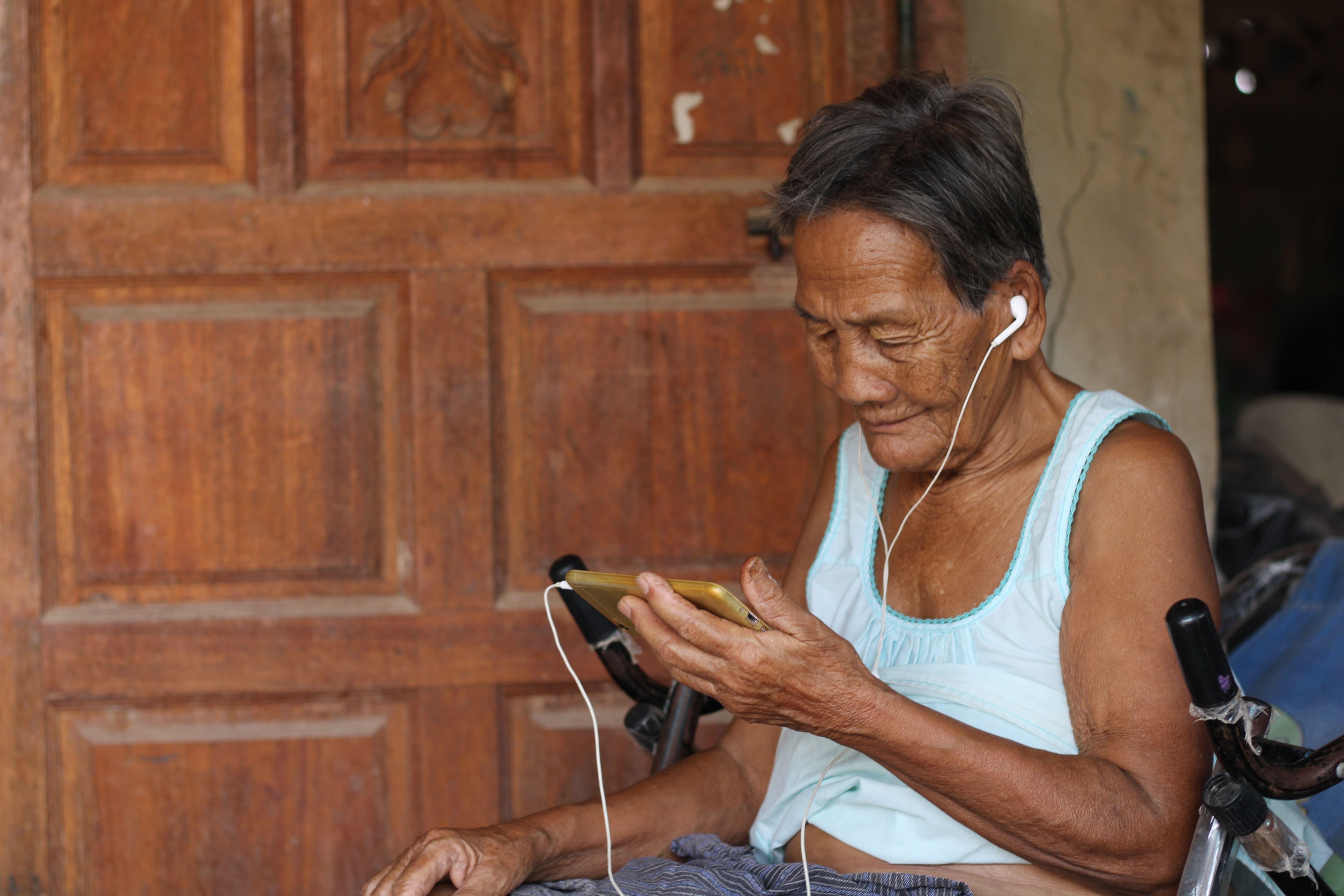
As a COPD patient, it’s important to keep your mind sharp and reduce anxiety and stress as much as possible. People who take their mental health seriously are able to more easily follow through with their treatment routine including maintaining an exercise routine, healthy diet, and medications.
3.) Practice or Listen to Music
The concept of music as a form of healing therapy has existed for centuries, however, it didn’t become a formal profession until the 1900s. Today, music therapy is used in both formal and informal settings in order to aid in treating mental health, cognitive, emotional, social, and even physical issues. While some people may question the efficacy of music therapy, it’s a type of treatment that has a long history of research backing it up.
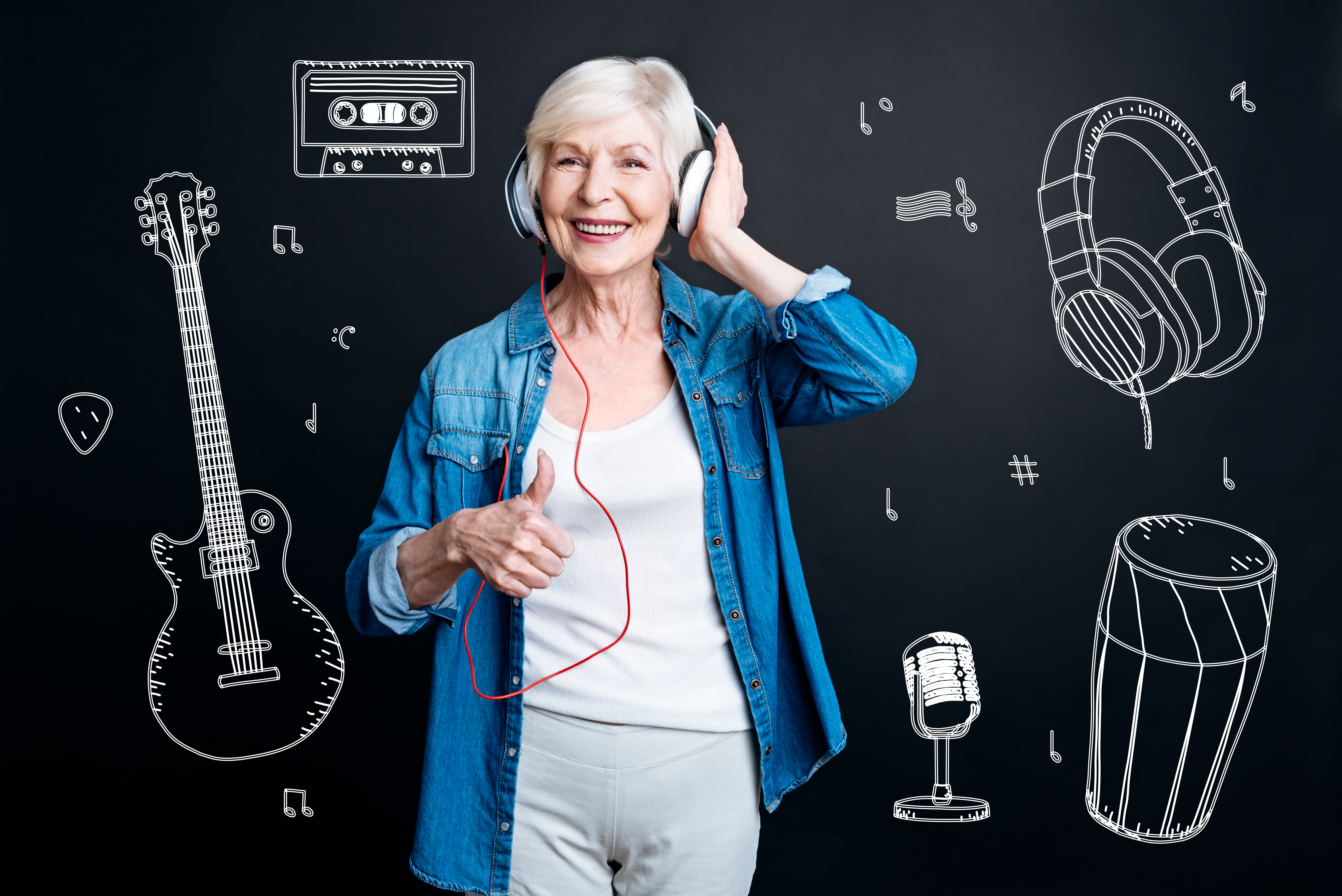
Another misconception about music therapy is that you need a professional in order to benefit from it. This couldn’t be farther from the truth as many people use music as a form of self-care to remedy stress, anxiety, depression, and other mental conditions. And the great news is that it’s very easy to get started. All you need is a music program such as iTunes or Spotify and speakers or a pair of earbuds.
Harvard Health sites a number of studies showing the positive effects of music on health. For COPD patients, stress reduction, mood improvement, and increased movement are among the most important. One study they mention tested the stress-reducing effects of music on patients before and after surgery. It concluded that patients who listened to music were less likely to need calming medication than those who didn’t.

Another study from 2011 found that music therapy can aid in preventing falls for people over the age of 65. Falling is a serious problem for seniors because as we age, our motor skills and function diminishes significantly. This problem is amplified in COPD patients who suffer from difficulty breathing and frequent exacerbations. This study concluded that walking and performing other tasks in time with music can limit falls by 54 percent.
The last study that Harvard Health sites has to do with the effects of music on mood. A 2006 study found that adults with chronic pain, such as symptoms from COPD and other lung diseases, experienced a reduction in disability, depression, and pain. Additionally, a 2009 meta-analysis discovered that music can reduce the effects of sleep disorders and promote quality sleep.
The important thing to draw from these studies is that you don’t need to work with a music therapist in order to benefit from the healing effects of music. Simply putting together a playlist of relaxing or uplifting music and listening to it for an hour or two a day can have substantial therapeutic benefits.

If you’re looking to engage more with the music, you can even try picking up a COPD-friendly instrument. Believe it or not, there are a lot of instruments that are great for COPD patients. For example, the harmonica is often recommended by medical professionals because it can help improve your lung capacity. The harmonica differs from other wind instruments like the trumpet, clarinet, or flute because it doesn’t require a great deal of air support. Another benefit is that it doesn’t weigh very much so you can easily carry it around with you wherever you go.
A couple of years ago, we wrote a great article that goes into detail about using music therapy to treat COPD. Feel free to check it out if you’re interested in learning more.
4.) Practice Tai Chi
When you think of “martial arts” you probably think of fighting methods such as judo, karate, or kendo. However, martial arts deals with a lot more than combat; it also has to do with mastering the mind and body. For someone with COPD, martial arts prove especially useful in learning to control breathing, master your motor functions, and gain more control over your thoughts and feelings.
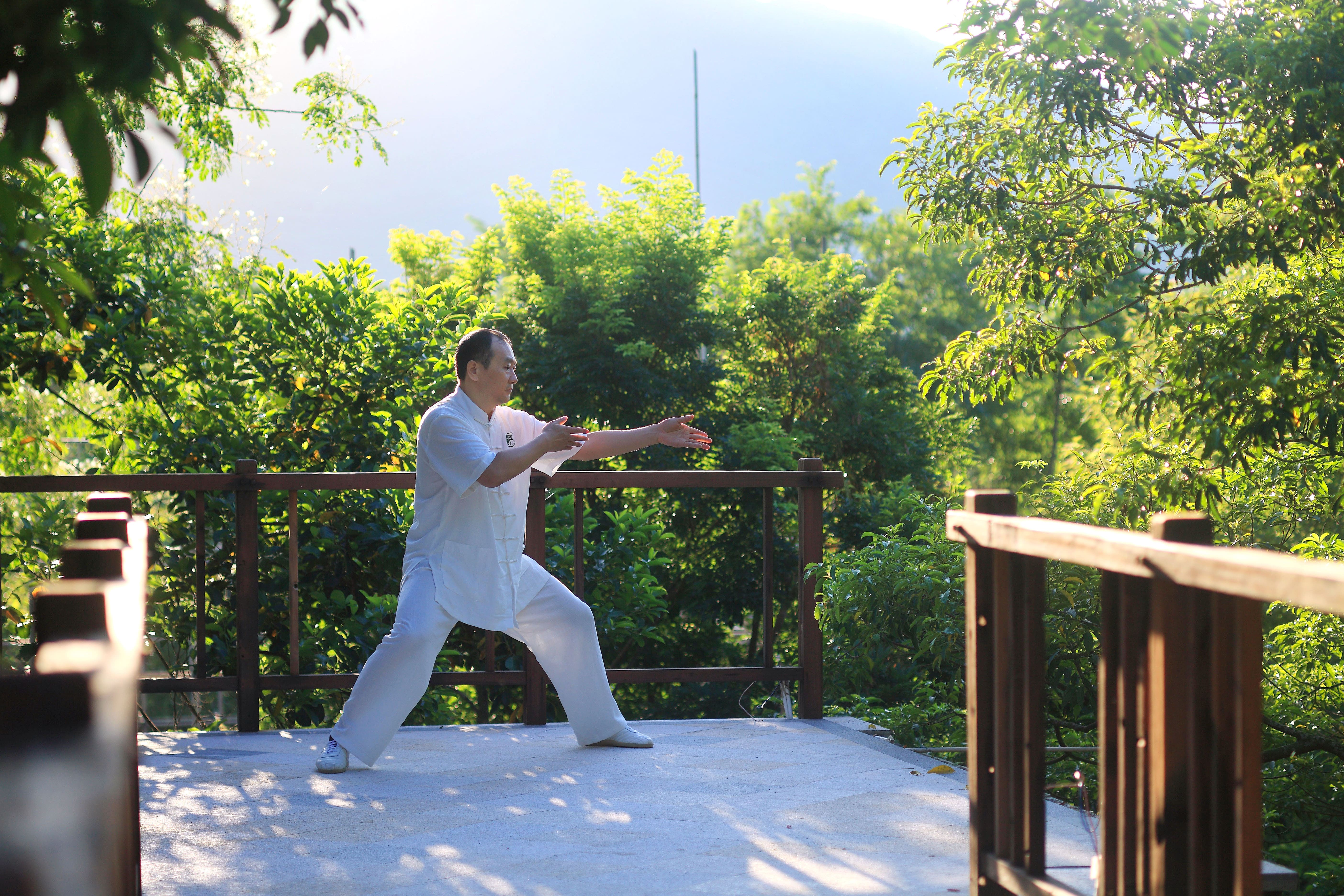
Tai Chi is a martial arts discipline that originated in ancient China. It’s often referred to as “meditation in motion” because it applies some of the same principles as traditional meditation but adds additional components such as basic motor functions, balance, and breathing. Tai Chi is beneficial for all ages, but it’s especially embraced by older generations.
One of the great things about tai chi is that it can be done just about anywhere. If you’re confined to your home, all you need to do is clear some space in the living room or family room. It’s also a good idea to practice Tai Chi on the carpet because hardwood floors and stone floors can be slippery. You can even go outside and practice in your front or back yard, just make sure you’re maintaining good social distancing from your neighbors.
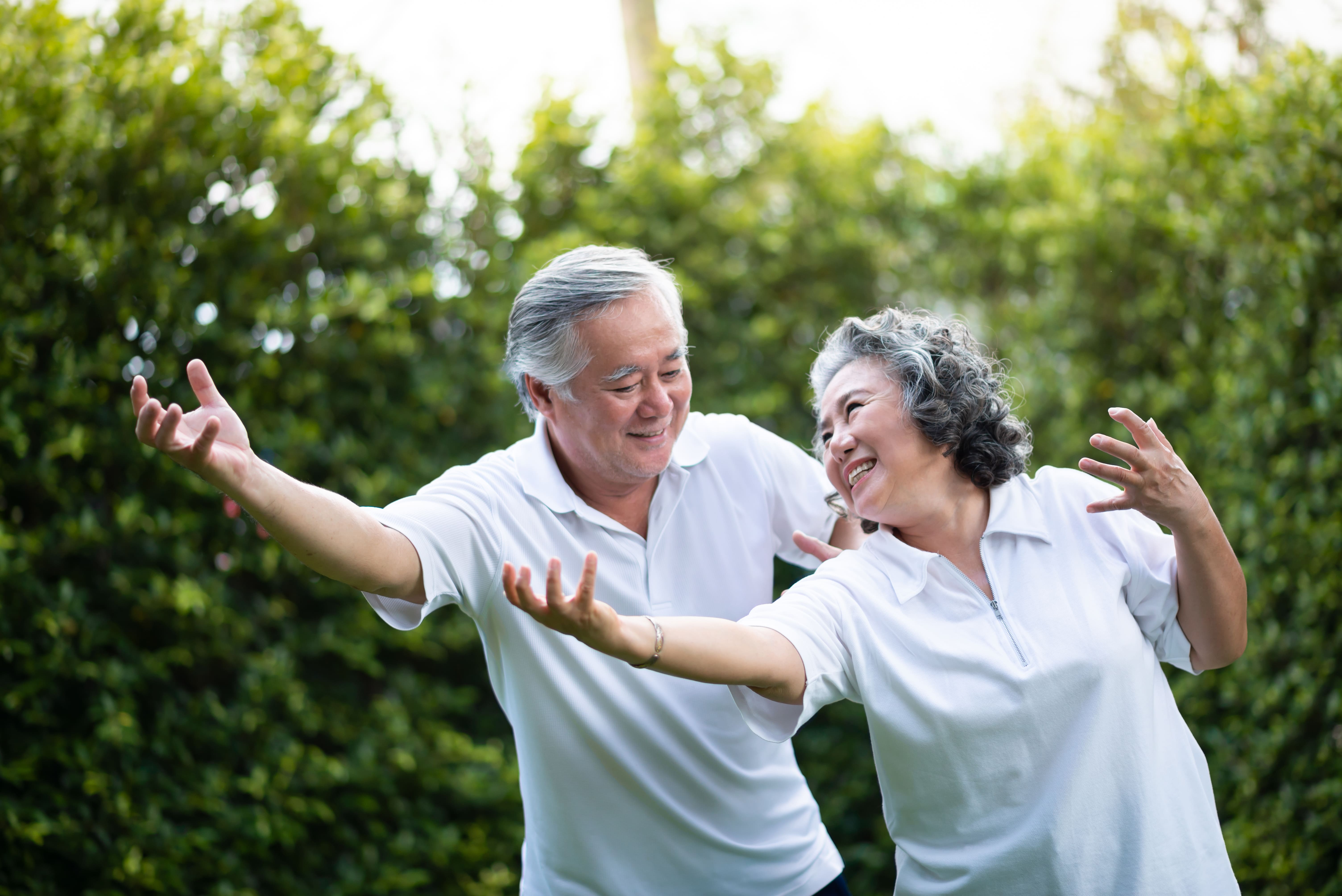
This study published in the Chest Journal examined the efficacy of Tai Chi in treating COPD. It found that, after twelve weeks, Tai Chi can be just as effective as pulmonary rehabilitation at improving muscle strength and reducing COPD symptoms such as breathlessness and fatigue. These particular participants used a form of Tai Chi known as the 24-form Yang, however, other forms of Tai Chi are proven to be effective as well.
You may be wondering, “how can I start Tai Chi?” While it’s normally advised that you join a Tai Chi group where you can learn from a professional trainer what to do, current circumstances do not permit this. Instead, it’s recommended that you use online training videos which will teach you the basics. The United States Tai Chi Community is also a great place to connect with other people and ask any questions that you may have about this martial art.
We wrote a great article about using Tai Chi to improve your COPD symptoms. You can find it here if you’re interested.
5.) Journaling and Scrapbooking
What better way to spend the quarantine than getting caught up on your journaling and scrapbooking? Admittedly, these hobbies aren’t for everyone. Some people like to document everything they do while other people prefer to tell their stories through spoken words rather than written words or pictures. But as the saying goes — you never know until you try it.

One thing about journaling and scrapbooking is that they take a lot of time, so if you’re interested in the idea, there’s really no better time to get involved than right now. They also have a lot of therapeutic effects that many people will find well worth pursuing even people who don’t typically enjoy writing or arts and crafts. According to the University of Rochester Medical Center, journaling is an effective means of reducing stress, coping with depression, and managing anxiety.
Another reason to invest time in journaling and scrapbooking is that it can be a creative outlet. As a COPD patient, it’s easy to get caught up in your daily routine of pulmonary rehabilitation, diet management, and breathing exercises. However, this doesn’t really provide you with a good opportunity to express your creativity and create something that you can be proud of. Journaling and scrapbooking can be very rewarding because there’s no right or wrong way to do them.

Lastly, these two activities give you the opportunity to provide something special for your family’s future generations. For example, if you create a scrapbook, it’s something that you can hand down to your children and they can pass down to their children when they’re old enough. This is the perfect way to create a lasting memory of your life experiences.
6.) Cooking
Cooking is another great way to pass the time while in quarantine. Whether you’ve spent your whole life cooking or you’re a beginner, there’s never been a better time to start. The benefit of cooking your own food is that it’s a great form of moderate exercise that will keep you on your feet and improve your COPD symptoms.

Another benefit of cooking is that you will know exactly what’s in your food. If you buy prepackaged food from the grocery store or eat out often, it’s hard to tell exactly what nutrients you’re putting in your body. Oftentimes, people are too afraid to turn over the packaging and read the long list of ingredients that they’re consuming, so it’s best to just avoid this altogether.
One thing to take note of while you’re cooking is to always put your safety first. Certain foods may produce a lot of fumes or smoke when you cook them and overcooking food can lead to the same results. This could lead to a flare-up in your respiratory symptoms or worse, a COPD exacerbation that could put you in the hospital. Take note of this before you start and recruit the help of a loved one if you don’t feel comfortable.
For more helpful information on cooking with COPD, check out this post.
{{cta('fa8abc2a-1e88-4fa3-82fd-1cb5b9ed43b2','justifycenter')}}
7.) Become a COPD Advocate
While there are certainly a lot of downsides to technology, one of the greatest benefits is that it enables people to stay connected anywhere they are in the world. While most people are staying inside their homes for the foreseeable future, we don’t have to worry about decades of COPD advocacy going to waste because a lot of this work can continue through the internet.

Now more than ever it’s imperative that COPD patients let people know the importance of COPD research, treatment, and funding. In crucial times like these, politicians and community leaders are working to determine the best place to allocate resources to help the greatest number of people. Since COPD is a leading chronic illness in the United States and COPD patients are at such a high risk of serious COVID-19 symptoms, our voices deserve to be heard.
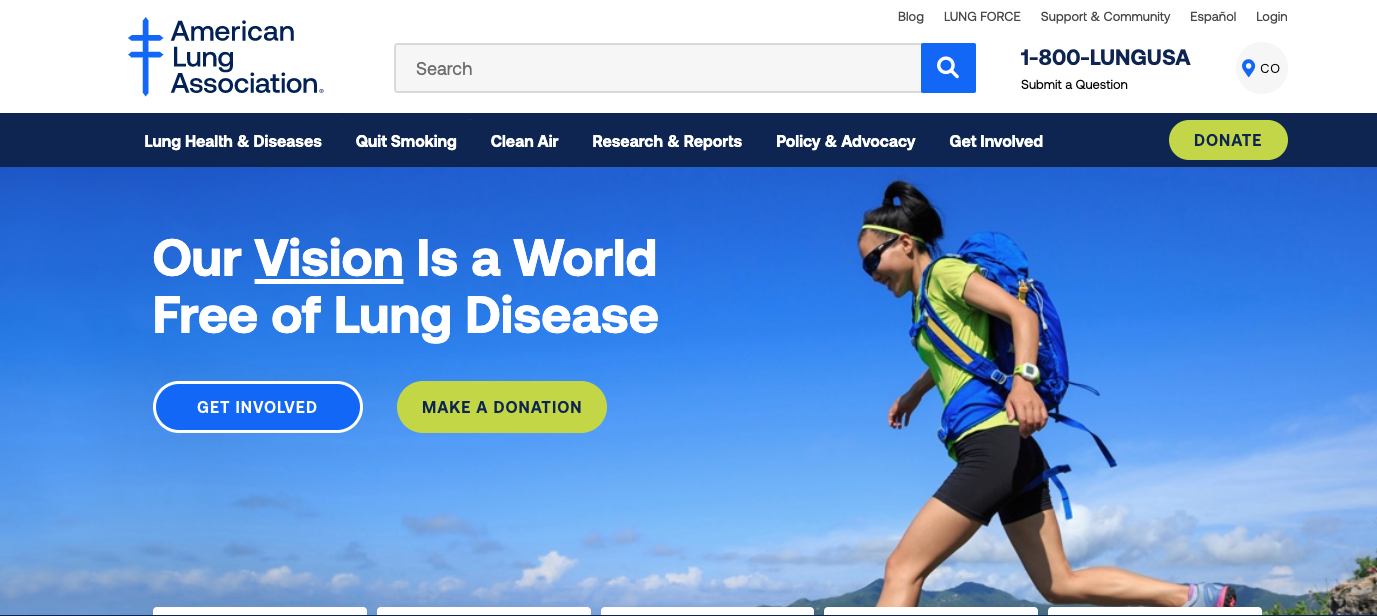
There are so many ways to get involved like the COPD Foundation, The American Lung Association, and a variety of other COPD organizations. You can even join COPD Facebook groups or start your own blog in order to tell your own story of living and coping with COPD. You can rest assured that if your thoughts are being heard, you’re contributing to the community as a whole.
If you’d like to learn more about becoming a COPD advocate, read our post on staying active in the COPD community while at home.
Conclusion
The coronavirus has taken a serious toll on the country. COPD patients need to take care to follow all safety regulations set forth by the World Health Organization (WHO) and shelter in place as much as possible in order to avoid getting sick. While you’re likely already missing going out and exploring the world or visiting friends, there are plenty of things you can be doing in the meantime to keep yourself occupied and healthy.
Try some of the hobbies above and let us know your thoughts in the comment section below. If you’re in the market for a portable oxygen concentrator like the Inogen One G5, don’t hesitate to fill out the contact form at the side of the page and one of our respiratory specialists will reach out to you to answer any questions you may have.
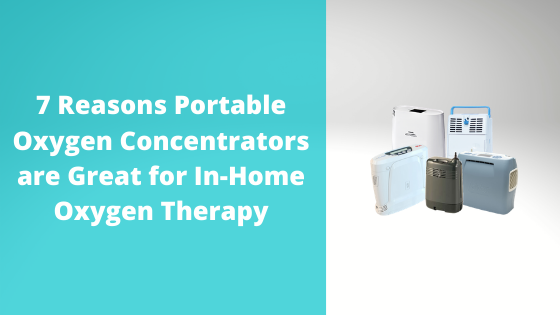
Here at LPT Medical, we’ve always taken pride in offering respiratory patients the resources they need to make educated decisions about their condition. With all the misinformation that’s out there on the web, it’s been our top priority to provide detailed, transparent, and factual information about issues that affect you the most such as oxygen therapy, diet, and exercise.
Rather than discussing untested alternative therapies or drastic lifestyle changes, we focus on practical solutions that are backed by decades of scientific studies. We also like to stress the importance of having open lines of communication with your doctor and pulmonologist, because ultimately, he/she understands the complexities of the disease you face better than anyone.
Given the current circumstances regarding the novel coronavirus (COVID-19), we understand if you’re skeptical of any information that you read on the internet. In times like these, people often rush to disseminate information without taking the time to first verify its validity. To counter this, we’re going to stick to a topic that we know and love — portable oxygen concentrators.
If you’re stuck at home due to the coronavirus lockdowns, you may be wondering what use you’d have with a “portable” oxygen concentrator. After all, these oxygen machines were designed for people who want to get out of their house and get moving. But this doesn’t necessarily mean they aren’t a great option for people with a sedentary lifestyle as well. Read on to learn more and be sure to fill out the contact form at the side of the page if you want to speak with a respiratory specialist.
What is a Portable Oxygen Concentrator?
An oxygen concentrator is a device that takes ambient air, removes nitrogen, argon, and other impurities, and puts out high-grade medical oxygen. Until recently, all oxygen concentrators were immobile and they had to be plugged into an electrical outlet in order to operate. This wasn’t ideal, because many oxygen patients felt restricted in what they could do and accomplish in their day-to-day life.
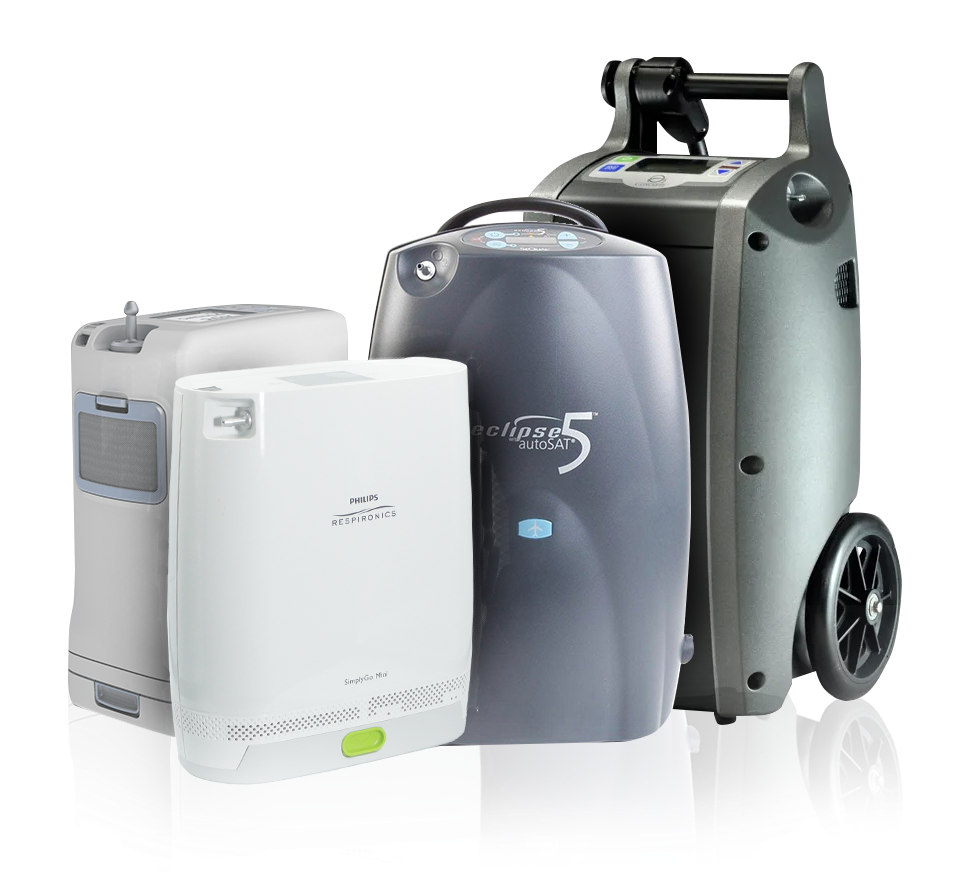
In the early 2000s, oxygen concentrators began to be replaced by lightweight portable oxygen concentrators. Rather than running off of a wall outlet, these new oxygen machines had batteries that could be charged and replaced, making it easier than ever for oxygen patients to get out of the house with the comfort of having access to high-grade medical oxygen wherever they went. While these new oxygen generators had many benefits over their counterparts, home oxygen concentrators remain popular to this day.
There are two different types of portable oxygen concentrators on the market: continuous flow portable oxygen concentrators and pulse dose (pulse flow) portable oxygen concentrators. A pulse dose unit conserves power by only administering oxygen when the user inhales and a continuous flow unit puts out a constant stream of oxygen. Because they have to filter more air, continuous flow portable oxygen concentrators tend to be a lot larger and bulkier. Let’s take a look at some of the reasons portable oxygen concentrators are often the best option for in-home oxygen therapy.
{{cta('fa8abc2a-1e88-4fa3-82fd-1cb5b9ed43b2','justifycenter')}}
1.) You Can Navigate Your Home More Easily
Although portable oxygen concentrators are designed for people who want to get out of the house, people often forget that they’re also a great option for anyone who wants to navigate their home more easily as well. From doing chores to cooking dinner and performing your daily pulmonary exercise routine, it’s imperative that COPD patients stay as active as possible.

First and foremost, portable oxygen concentrators are the lightest oxygen devices on the market. Pulse dose portable oxygen concentrators usually weigh under 6 pounds which is light enough to sling over your shoulder and carry with you wherever you go without suffering back pain or fatigue. The Inogen One G5, for example, weighs in at just 4.7 pounds and it still has a higher oxygen output than most POCs on the market.
.png)
On the other hand, people who use an oxygen tank or home oxygen concentrator find that there’s a lot to be desired. When it comes to compressed oxygen, the size of the unit directly correlates to the amount of oxygen you’ll have access to. This is because oxygen can only be compressed to a certain pound-force per square inch (psi) before it becomes too dangerous to use. Home oxygen concentrators will provide you with an infinite supply of oxygen, but they need to be plugged into an electrical outlet at all times, meaning they’re not ideal for someone who wants to navigate their home more easily.
2.) They’re Safer Than Their Alternatives
Safety should be a top priority when handling oxygen. Although oxygen is an essential gas that we depend on every day for our survival, it also has a lot of risks associated with it when it’s not handled properly. Contrary to popular belief, oxygen is not a flammable gas, but it is what’s called an oxidizer. This means that anything that oxygen is exposed to, it becomes more flammable. In other words, a fire that’s exposed to high levels of oxygen will burn more easily than a fire that is not exposed to high levels of oxygen.
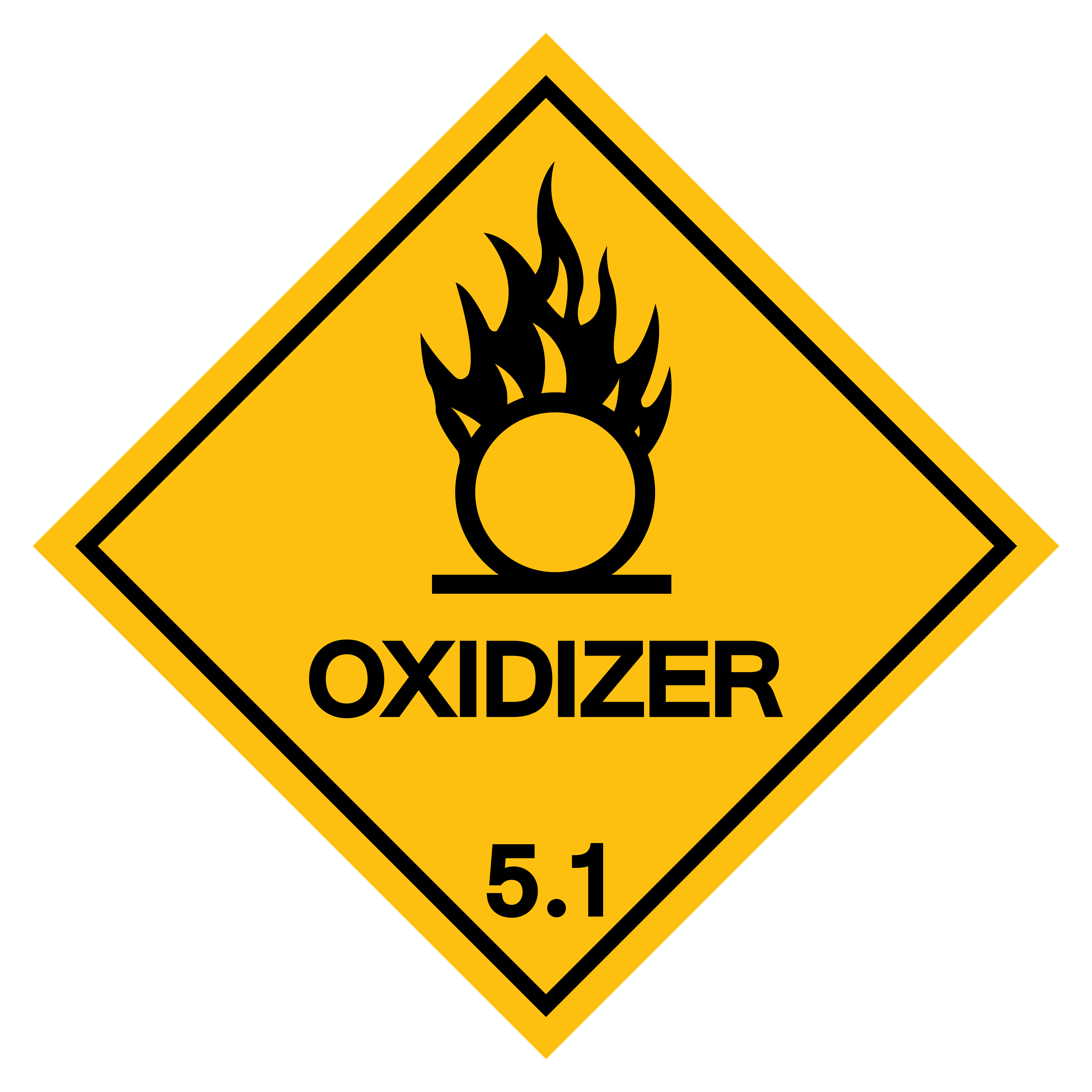
The problem with compressed oxygen, liquid oxygen, and home oxygen concentrators is that they all use continuous flow oxygen delivery. If you happen to drop your nasal cannula and leave it there, you could be putting yourself and loved ones in danger. However, the pulse dose technology that’s used in many portable oxygen concentrators cuts off the oxygen supply if no breath is detected. While this is implemented in order to save battery life, it also acts as a safety mechanism.
With everything that’s going on in the world right now, it’s imperative that you feel safe within your own home. You likely already spend a lot of time disinfecting your home and following all other coronavirus prevention protocol, so having a safe oxygen concentrator will give you one less thing to worry about during these uncertain times.
3.) They’re More Affordable Than Their Alternatives
Unfortunately, many people will invest in a home oxygen concentrator or oxygen tank with the assumption that it’s the cheapest option available to them. But when you take into consideration both upfront and long-term costs, you’ll find that portable oxygen concentrators can be as cost-effective if not more so than their counterparts.
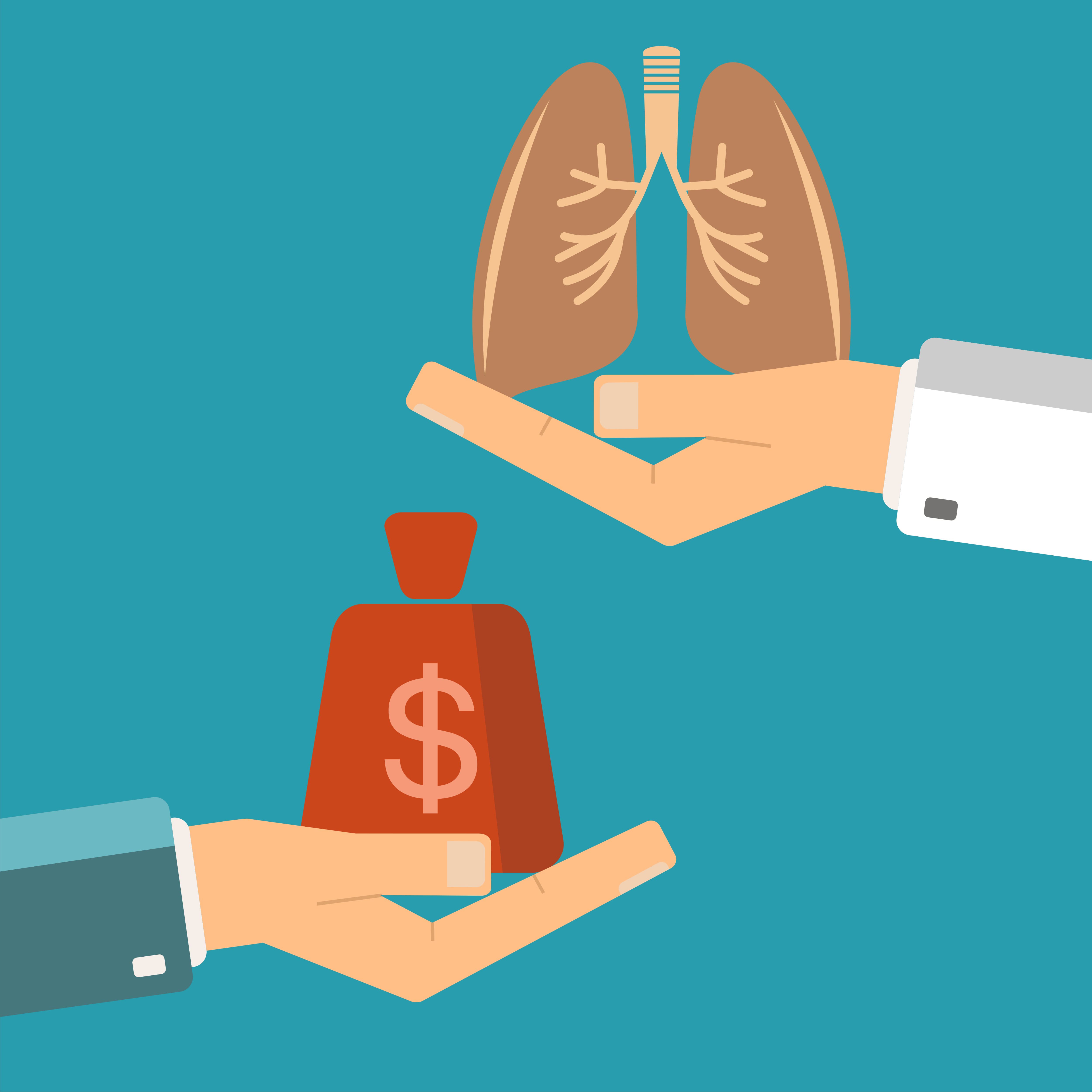
Oxygen tanks are appealing to many oxygen users because of their low upfront cost. You can purchase an oxygen tank for several hundred dollars, but this doesn’t take into account the costs that will be incurred over the next several months and years. If you want to refill your own oxygen tanks, you’ll need to buy what’s called a “home fill station.” These will run you several thousand dollars, not to mention they take up a lot of space. Alternatively, if you choose to have a professional refill your oxygen tanks, you’ll likely incur hundreds, if not thousands of dollars in service costs.
.png)
When you purchase a portable oxygen concentrator, you’ll eliminate the majority of these long-term costs. These machines are designed to be energy efficient and they’re made of durable components that will last for years to come without needing to be replaced. In fact, most POCs on the market are designed to last 5 years or more. In the event that you receive a defective unit, you’ll be happy to know that most POCs come with a 3-year warranty which can often be extended to 5-year or even a lifetime warranty.
{{cta('b59df0c1-c4de-47a8-8e1c-0d33d4b414aa','justifycenter')}}
4.) They Offer More Choices for Patients
Life is all about choices, and the more choices we have, the more freedom we have. Unfortunately, home oxygen concentrators and oxygen tanks don’t offer much in the way of options. While you will be able to choose between different brands, there isn’t a large degree of difference between the actual units themselves aside from quality and size.
Portable oxygen concentrators, on the other hand, offer plenty of options you can choose from, allowing you to pick something that matches your lifestyle. For example, you could purchase a POC like the Caire FreeStyle Comfort which provides you with an outstanding 1,050 ml/min of oxygen or if you want your POC to be as light as possible, you can buy the AirSep Focus which weighs in at only 1.75 pounds!
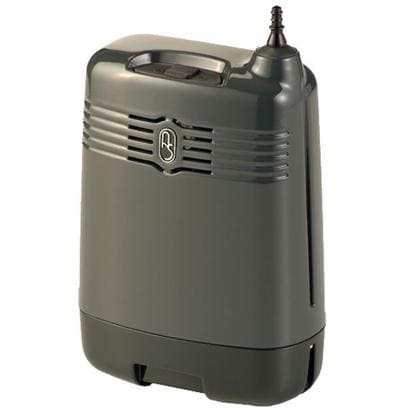
Another freedom you’ll enjoy with portable oxygen concentrators is the wide range of accessories that’s available for them. Most POCs are released with accessories such as carrying bags, backpacks, rolling carts, battery packs, and external battery charges, all of which enable you to customize and improve your oxygen experience.
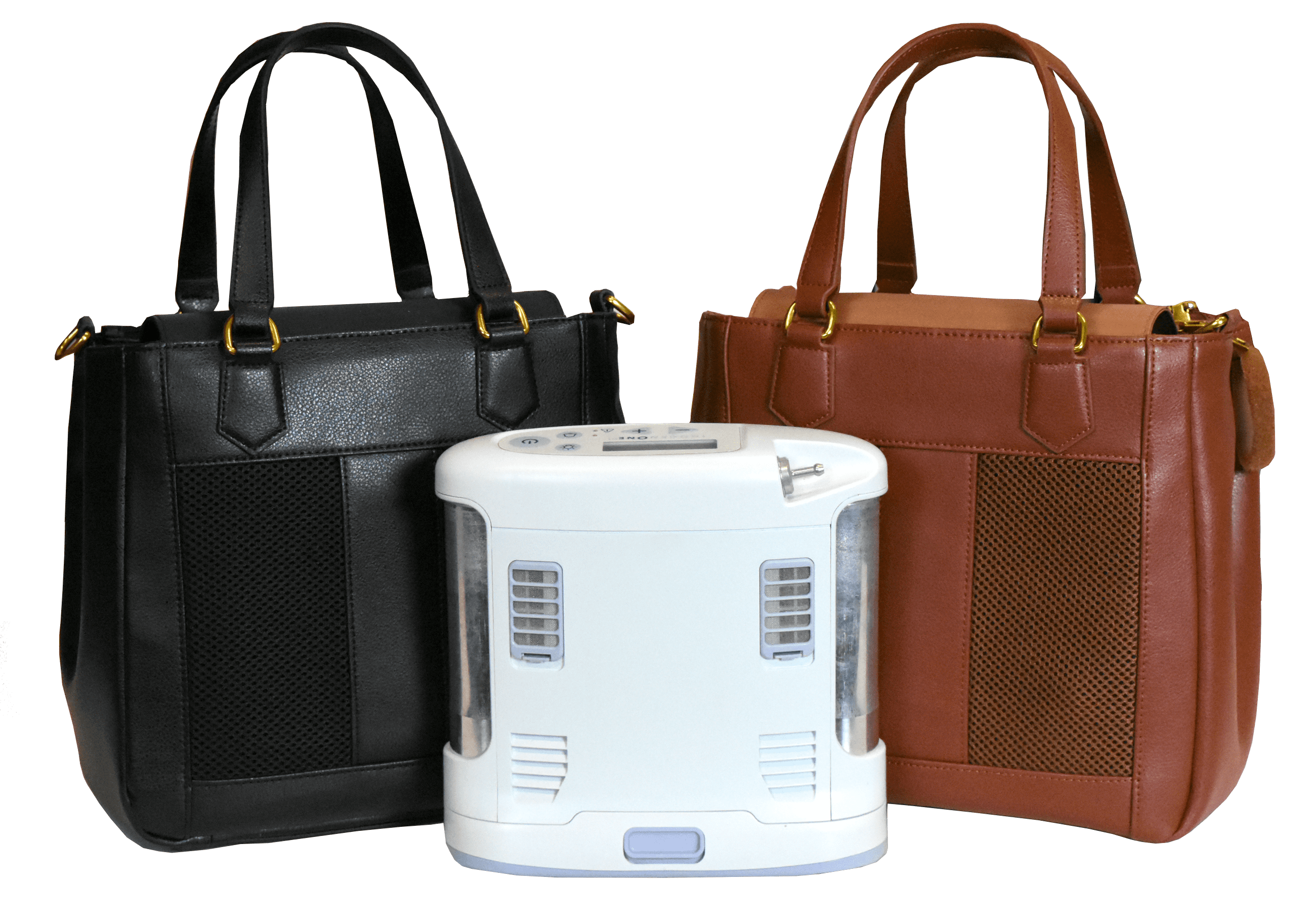
5.) Many POCs Offer Telehealth Services
Telehealth is a fairly new concept, but it’s one that’s shaping the future of healthcare. In fact, in the wake of the novel coronavirus, the need for telehealth services has seen a sharp increase due to the fact that more people are staying home, and people with chronic conditions like COPD want to have access to health services without leaving the home. According to a survey by Black Book Market Research, 59 percent of respondents said they would be more likely to use telehealth services given the current circumstances; 33 percent even said they would leave their current physician for one who supports it.

It may surprise you to know that portable oxygen concentrators are paving the way for telehealth technology in many ways. The Caire FreeStyle Comfort, for example, comes equipped with a program called CAIREview™. Essentially, what this does is provides a cost-effective oxygen usage tracking solution for anyone who owns this travel oxygen concentrator. When you want to learn about your oxygen usage, simply download the app on a mobile phone, tablet, or computer. You can even have information sent directly to your pulmonologist.
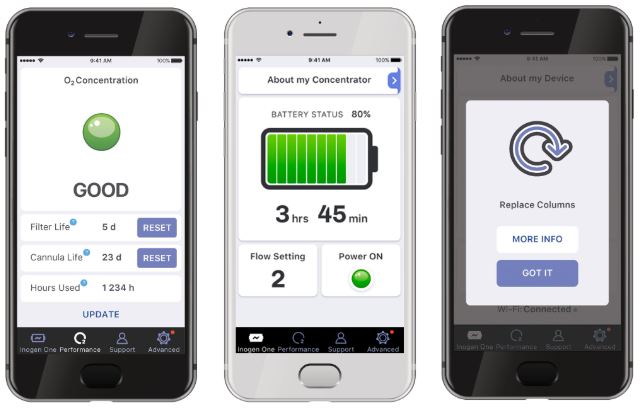
Another example of telehealth services is the Inogen Connect app for the Inogen One G4 and Inogen One G5 portable oxygen concentrators. This application is similar to the CAIREview™ but it provides some additional functionality. For example, you’ll receive system updates for your G4 and G5 that can fix glitches in the system. You can also receive special discounts and coupons directly from Inogen. The best part of all is that it’s 100 percent free to download and use.
Last but certainly not least, we offer a free Thrive ePulmonary Advanced workshop FREE with the purchase of any portable oxygen concentrator. This is one of the most reputable and trusted online learning programs and you can experience its full benefits without ever leaving the comfort of your own home. The program includes the following:
- Step-by-step breathing exercises
- Online e-books and respiratory guides
- Access to private support groups
- Access to medical professionals including pulmonologists and respiratory therapists
-
Learn skills to help slow the progression of your disease

There’s no understating the importance of telehealth services during uncertain times like these. By investing in a portable oxygen concentrator rather than another type of oxygen therapy, you’ll be more connected than ever before despite not being able to leave your home. As a COPD patient, you’ll be able to closely track your oxygen usage and have that information sent directly for your pulmonologist to interpret it.
6.) They’re Great for 24/7 Use
In certain situations, patients may be required to use supplemental oxygen while they sleep. This is more common in people with severe COPD or obstructive sleep apnea (OSA), a condition where the airways are blocked off during sleep. When this happens, you will need a reliable source of medical oxygen that’s designed for 24/7 use. Most portable oxygen concentrators support nighttime use and POCs like the Inogen One G5 even have a special Sleep Mode Technology that will help deliver precise oxygen boluses while you sleep.
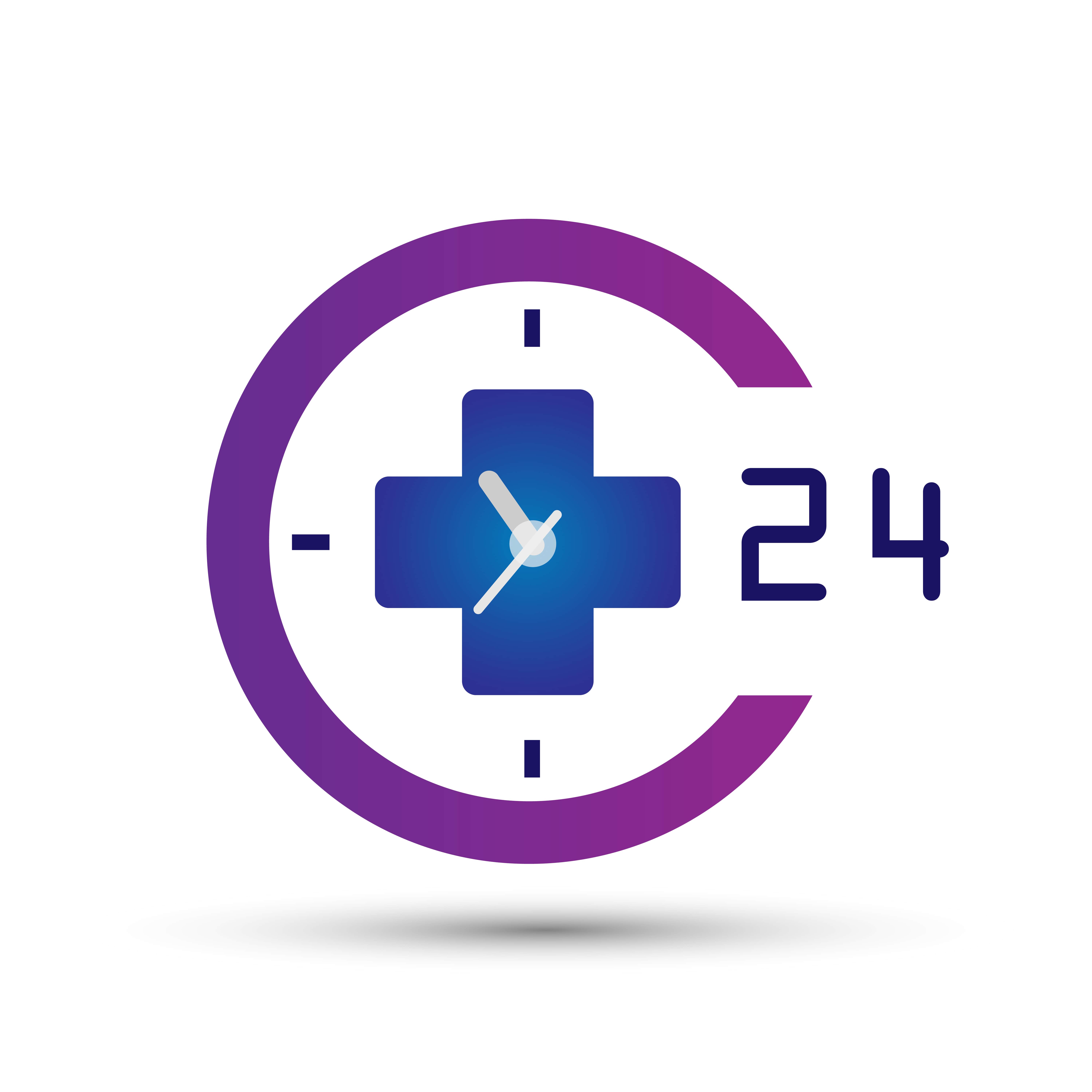
One thing to note about sleeping with oxygen is that pulse dose concentrators are NOT compatible with CPAP and BiPAP machines. The reason for this is because pulse dose concentrators need to be able to detect your breathing to a tee in order to deliver oxygen at the right time. Unfortunately, CPAP and BiPAP machines interfere with this process so you’ll need to use a continuous flow oxygen machine. Home oxygen concentrators and oxygen tanks will work well with your CPAP machine, but continuous flow portable oxygen concentrators will be the ideal choice.
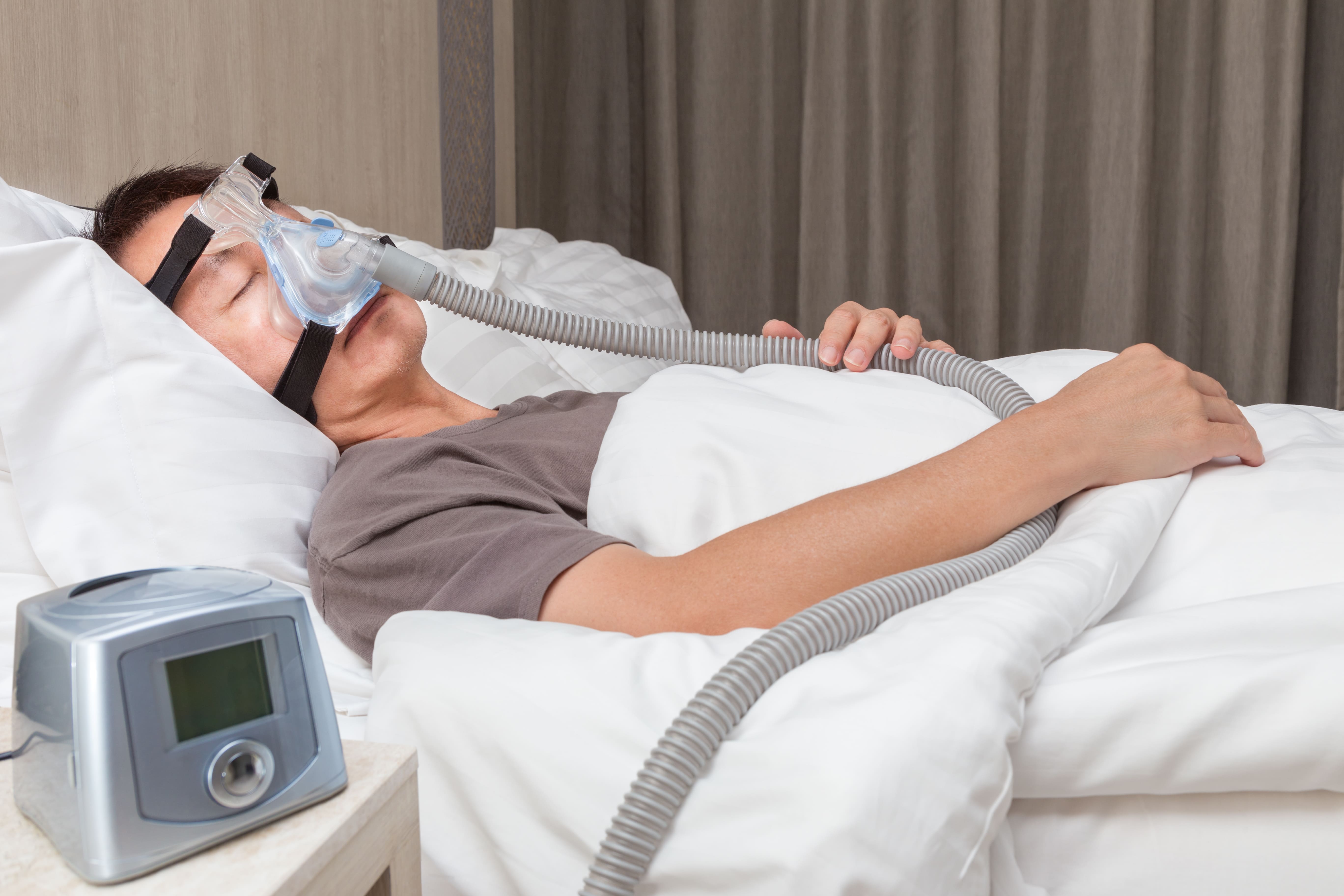
7.) They’re the Best Long-Term Option
Truthfully, the coronavirus lockdown isn’t something we’re going to have to deal with forever. In fact, many states are already talking about ways to reopen their economies and allow people to safely reintegrate into public areas. While it will likely be some time before COPD patients will want to get back out into the world, it’s in your best interest to be prepared for when it does happen.
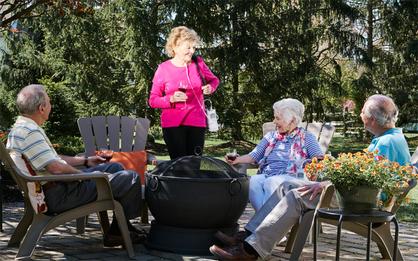
One thing you’ll probably want to do once the time comes is to start traveling again and in which case, you’re going to want to have a portable oxygen concentrator rather than a bulky oxygen tank. POCs are approved by the Federal Aviation Administration (FAA) for in-flight use both inside and outside of the United States. They’re also approved by most cruise lines along with other types of transportation.
{{cta('43b79c5e-6bd6-4f02-ac27-2d038d20c146','justifycenter')}}
Conclusion
The last couple of months have been very challenging for many people, especially those with chronic conditions that put them at a higher risk of experiencing severe COVID-19 symptoms. Many COPD patients, in particular, are concerned about how they will continue to receive the medical help they need despite not being able to visit their doctor. Fortunately, things like telehealth services are available that can make this a little easier.
When it comes to choosing a medical oxygen device, there are plenty of great options, but we strongly believe portable oxygen concentrators offer the greatest short- and long-term benefits without breaking the bank. If you’d like to learn more about the POCs we have to offer, please fill out the contact form at the side of the page and one of our respiratory specialists will reach out to you as soon as possible.
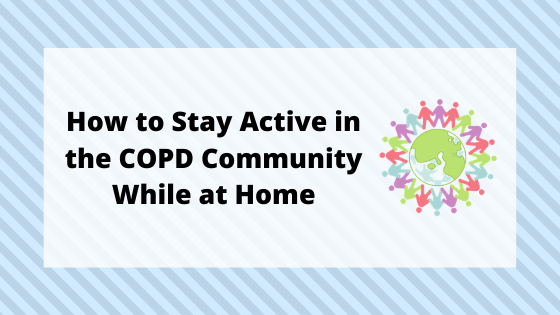
At this point in time, the vast majority of Americans are under some type of quarantine. Whether you’re young or old, healthy or not, it’s important to follow these guidelines because they will help prevent the spread of the novel coronavirus (COVID-19). In addition to these measures, it’s important to follow the updated instructions given to us by the World Health Organization (WHO), this includes:
- Washing your hands thoroughly and regularly throughout the day
- Avoid touching your face
- Maintain at least 6 feet of distance between you and the closest person
- Cough or sneeze into your arm or a Kleenex
-
Always stay home if you’re feeling sick
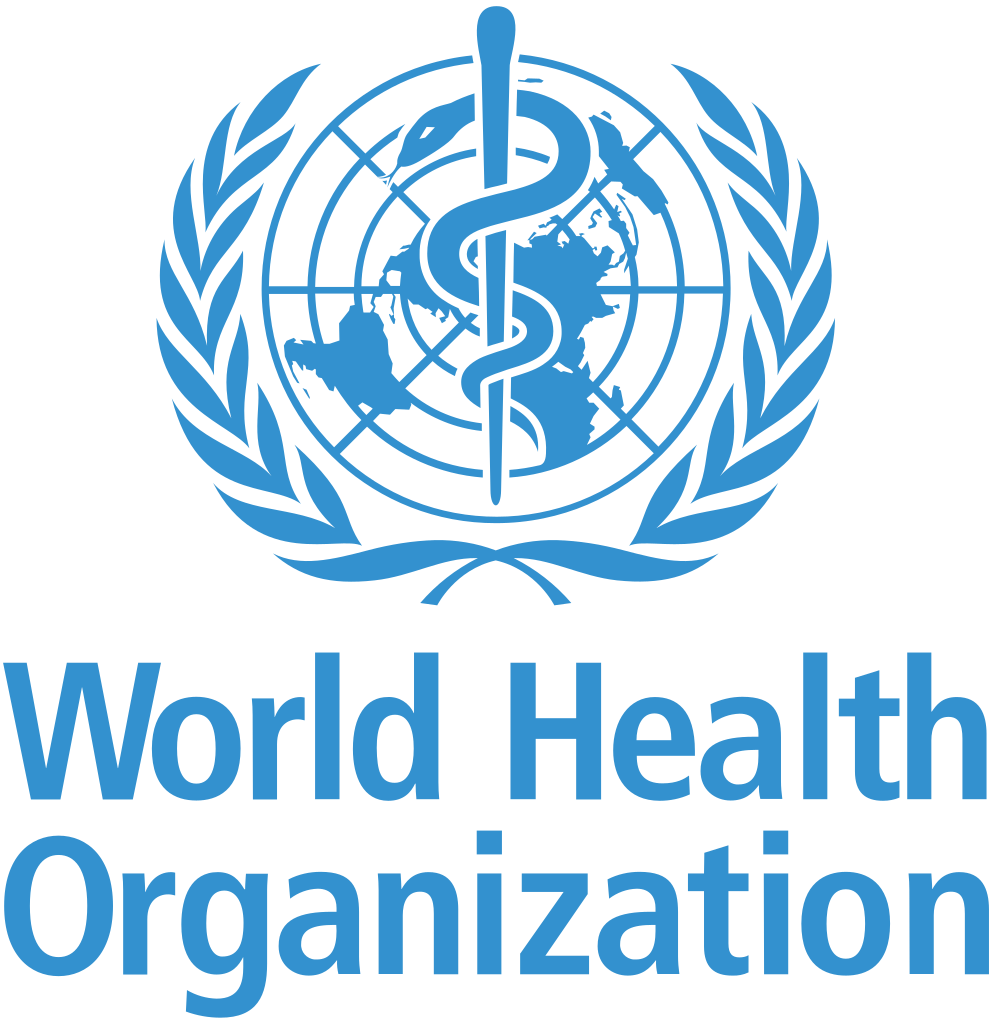
While it hasn’t been officially advised by the WHO, we’d also like to add face masks to this list. There’s been a lot of debate about whether or not medical or non-medical face masks are effective in preventing COVID-19, but the general consensus seems to be that using some type of face covering can be effective in preventing the spread of germs. However, people shouldn’t get a false sense of security from wearing a mask, because guidelines like social distancing are still very important.

If you remember from last week, we gave you a complete guide for dealing with COVID-19 if you’re a COPD patient and a guide for staying active while you’re at home. These are still great resources for anyone who’s stuck at home and wants to educate themselves on staying healthy. However, one issue we haven’t touched on yet is the way that COPD communities have been affected by the virus. Read on as we discuss more important information for COPD to know during these difficult times.
{{cta('fa8abc2a-1e88-4fa3-82fd-1cb5b9ed43b2','justifycenter')}}
The Importance of COPD Communities
A COPD community is a place where people with COPD and other respiratory conditions can support each other and raise awareness for their illness. This could be a group that’s put together by a professional organization such as the COPD Foundation or the American Lung Association or it could be an independent event held by COPD advocates.

Fortunately, due to modern technology, it’s easier than ever to maintain COPD communities without actually meeting in person. It’s possible to maintain relationships with other patients entirely over the internet through things like discussion forums, video chat rooms, and more. The following are some of the reasons it’s so important to maintain these relationships even during quarantine.
COPD Advocacy Shouldn’t Stop During a Pandemic
Possibly one of the most important functions of COPD communities is to advocate for people struggling with health conditions. We discussed this topic in detail in a previous post, but we’ll provide you with a condensed version here for convenience. According to the Correlation European Harm Reduction Network, advocacy has four different functions:

- To help someone maintain control over their lives and promote their rights
- Promote inclusion of a wide spectrum of people and ensure that isolated individuals are able to get the help they need
- Empower people with the ability to speak for themselves and their own needs while speaking on behalf of others
- Provide people with an outlet to educate and better themselves and to clarify misunderstandings about their condition
Another important thing to note about advocacy is that it doesn’t just have to be done by people who actually have COPD. In order to have a wider reaching impact, advocacy should be embraced by friends, family, and loved ones in order to make a bigger impact on the community and the world. What’s more, advocacy isn’t something that should halt once a pandemic like COVID-19 starts. In order for advocacy to continue, COPD communities need to remain intact and stay as active as possible despite the circumstances.
Communities Are Often Therapeutic
Another reason COPD communities are important is because they are often therapeutic. Oftentimes, insecurities, anxieties, or otherwise negative thoughts that are brought on by chronic lung disease can be cured with simple human interaction. This is similar to how someone with a drug addiction or mental health condition may join a rehabilitation program in order to speak and interact with likeminded people.
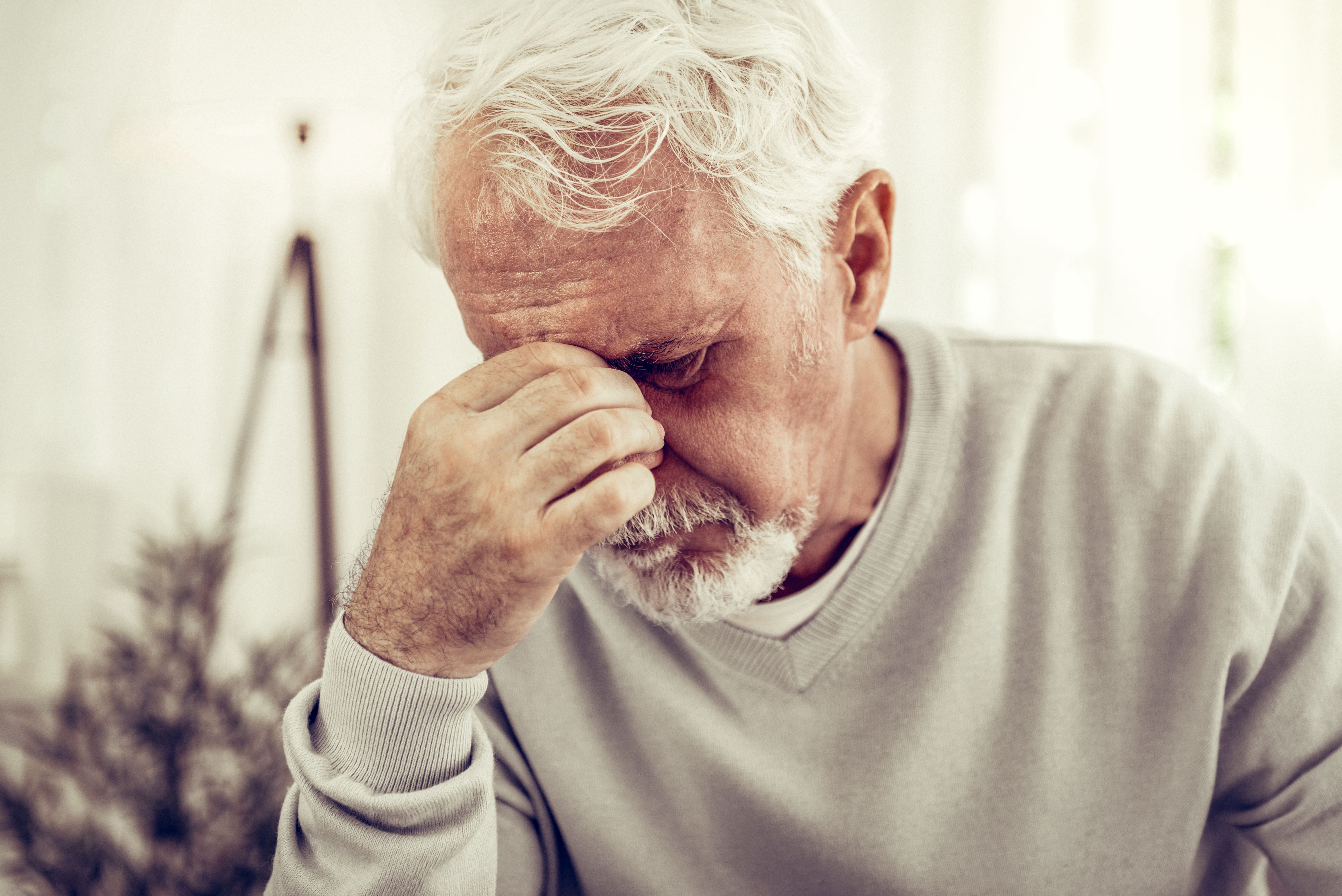
Giving and Receiving Medical Advice
Managing a complex condition like chronic obstructive pulmonary disease can be challenging. Whether you need advice on the treatment plan that you’ve already been prescribed or you’re searching for alternative treatments for COPD, there’s nobody better to talk to than someone who has experienced the same symptoms. When you consult the COPD community for medical advice, you’re sure to receive loads of great advice from people who truly want to help and who understand what you’re going through.
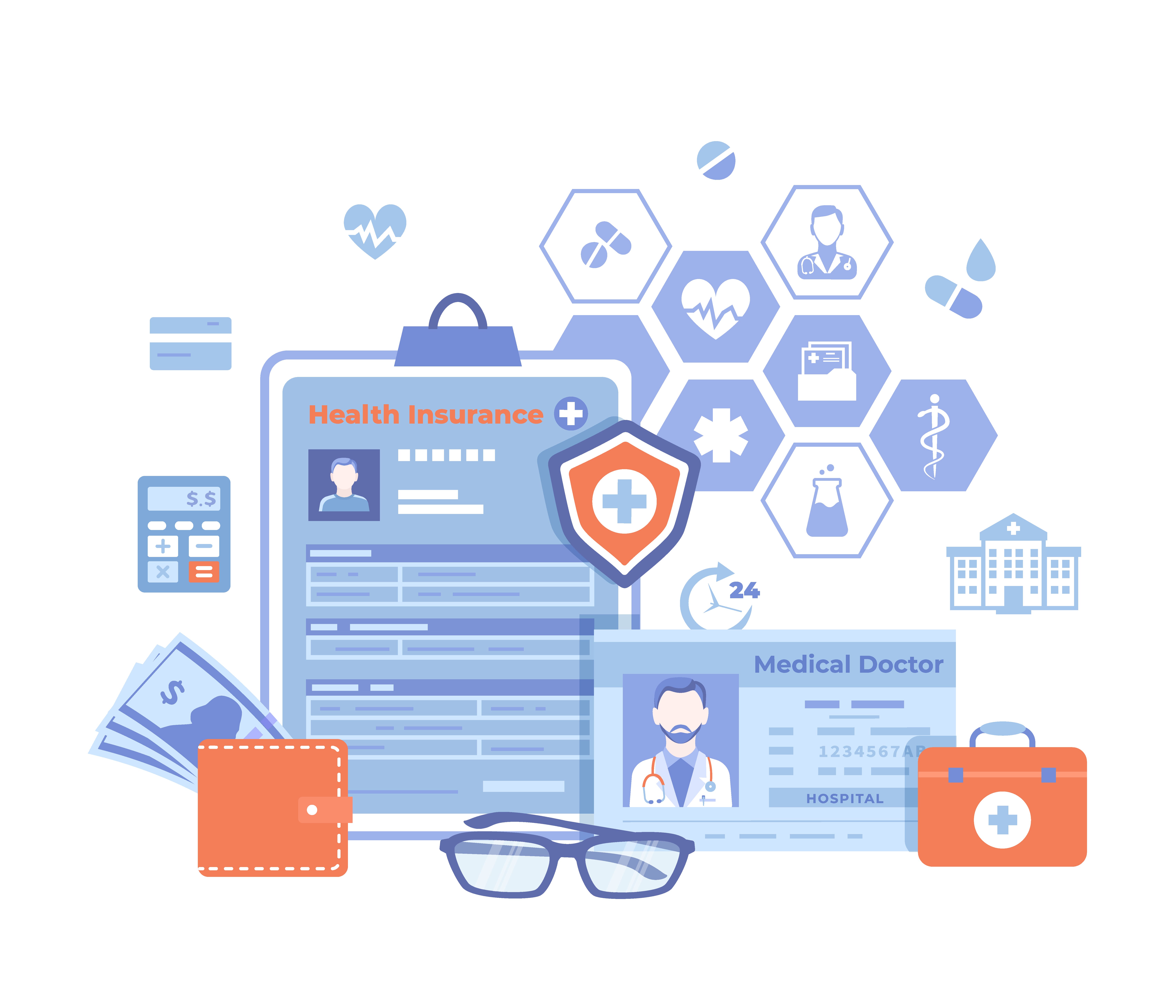
At the end of the day, it’s just as important to give advice as it is to receive it. If you think back on all the experiences you’ve had coping with COPD, you can likely think of one or more pieces of advice you could provide the community with. Just make sure you’re not giving advice about something that you’ve never dealt with or have no experience with. When receiving advice, it’s also important to consult your doctor before making any major changes to your COPD treatment plan.
{{cta('b59df0c1-c4de-47a8-8e1c-0d33d4b414aa','justifycenter')}}
Online COPD Support Forums
An internet forum is a place where people can exchange information on a given topic through the internet. One of the great things about internet forums is that they often archive their information, so if you find something useful, you can refer back to it many months or even years after you found it. Simply bookmark it using your web browser and you can return to the page anytime you want.
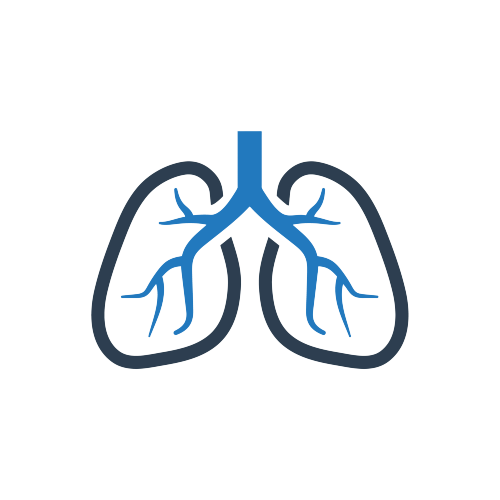
Another reason to use online COPD support forums is that you can contribute as much or as little as you choose. Rather than having to commit to attending specific events, you can simply read through various forums and respond whenever you have the time. They also tend to be fairly active, so if you ask a question you should get a reply pretty quickly. Read below for a list of internet forums that all COPD patients should know about.
The COPD Foundation
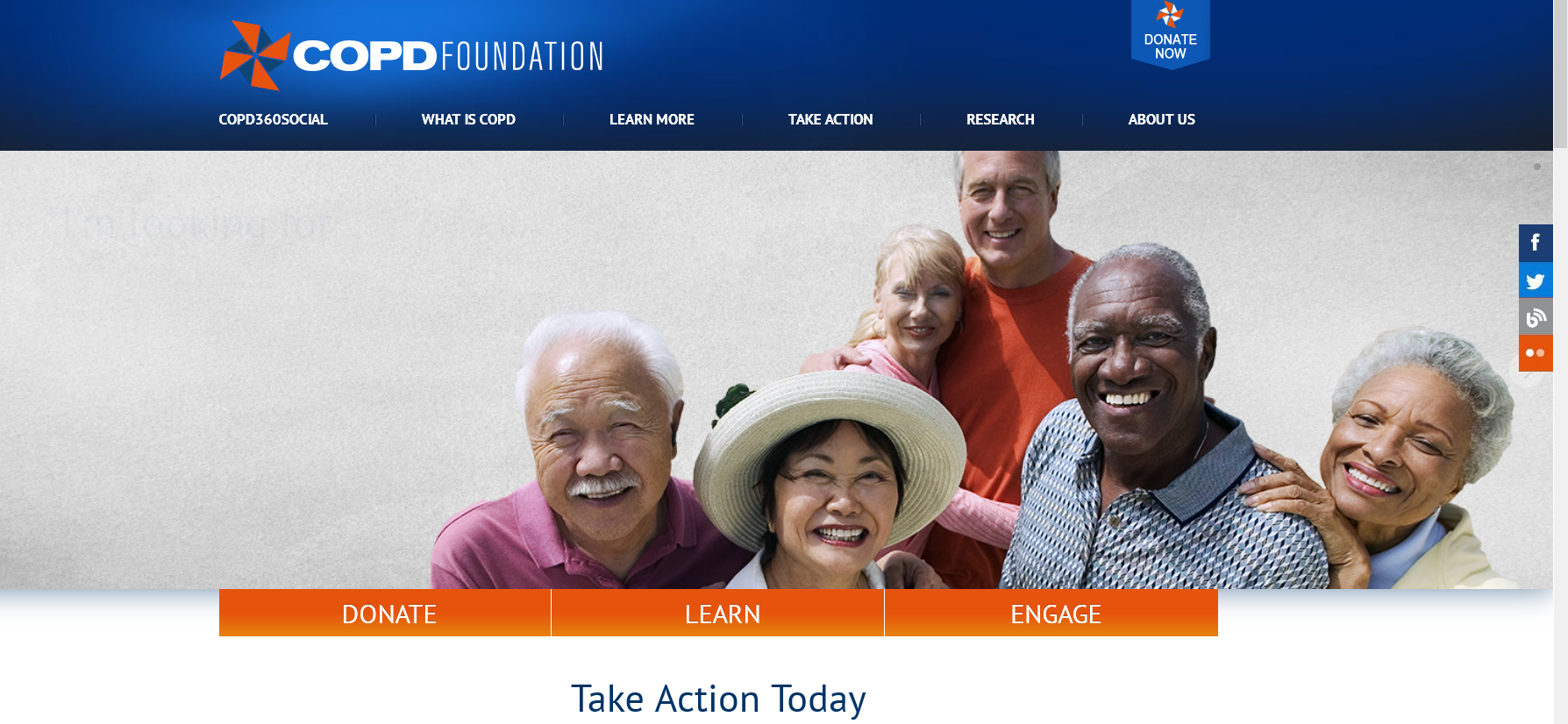
The COPD Foundation is a nonprofit COPD advocacy group founded in 2004. Its mission is to help develop innovations that will improve the lives of COPD patients all across the world. Scientific research, education, and awareness are their primary means of accomplishing this, and they’ve developed their own approach to doing this called COPD360.
COPD360 is designed to enable partnerships between healthcare professionals, patients, caretakers, academic institutions, and researchers. By doing so, everyone will be better equipped to prevent COPD and treat it more effectively. One of the services the COPD Foundation offers specifically for COPD patients is called COPD360 Social. This platform aims to connect patients and educate them about their treatment options. It also provides a supportive environment for caretakers and family members who are looking to share stories, information, and advice.
The best part about signing up for a membership is that it’s entirely free and it will instantly connect you to thousands of other people around the world. All you will have to do is give them some basic information and then you can log in and start posting questions or reading through previous forums. One cool feature of this service is the badge system. The more someone answers questions in a helpful way and are upvoted, their experience will be displayed in their profile. This way, you’ll know if you’re receiving information from a well-respected member of the community or not.
The American Lung Association

The American Lung Association is one of the oldest and largest lung health advocacy groups. Their number one mission is to save lives by improving lung health and preventing lung disease. While they tend to focus on defeating lung cancer, they also champion clean air, and creating a tobacco-free future. Just recently, the American Lung Association announced a $25 million fund that will be used to award research grants for preventative research, vaccines, antivirals, and to help with future outbreak preparedness.
Similar to the COPD Foundation, The American Lung Foundation has a forum where you can ask and answer questions, communicate with other respiratory patients, and much more. Their forum is hosted through Inspire.com, a site designed to connect people with various health conditions across the world to provide support and medical advice. The great part about Inspire is that there’s a mobile application which will allow you to connect to the service no matter where you are in the world, as long as you have an internet connection.
COPD.net
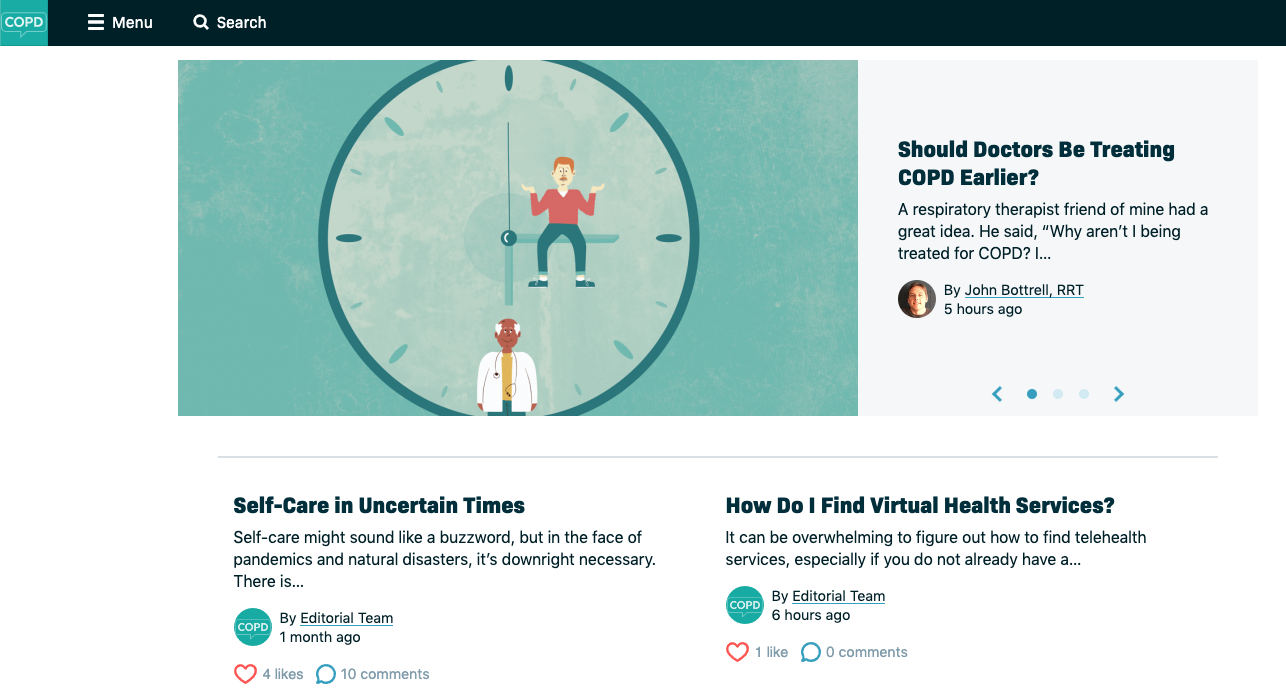
Whether you’re a COPD patient or caretaker, COPD.net aims to empower, educate, and equip you with the tools you need to manage COPD symptoms and live a better life. They also offer featured articles written by prominent physicians, advocates, or other health experts. In general, COPD.net is a great resource for anyone who wants to learn about COPD from more than one perspective. Their blogs and articles will help you see your condition in a new light and also give you resources to cope with the mental and psychological effects more easily.
COPD.net’s Help Center is hosted by Health Union, a social media platform that was created to leverage technology in a way that enables people with chronic conditions to have more meaningful, productive, and impactful connections through the internet. You can get started by following the link to the COPD.net Help Center and reading through the instructions. You’ll learn a bit about the history of Health Union and its purpose. You’ll receive a weekly e-newsletter, surveys and research opportunities, and you’ll gain access to the Q&A tool.
Social Media
Aside from organizations which run communities of COPD patients and caregivers, you can also find many different COPD communities through social media sites like Facebook, YouTube, or Twitter. The organizations listed above all have social media pages that you can follow and receive updates from, but you can also join independently run Facebook pages. To find a COPD group on Facebook, simply log in and click “groups” at the top of the page. Then you can search “COPD” and you should see a list of results. Find one that looks interesting then click “join group.” You may be required to answer several questions before being admitted into the group.
![]()
One of the best parts about using social media sites like Facebook to stay connected during the pandemic is that you’ll have a lot of free reign when it comes to how you interact with people. Facebook allows you to post photos, videos, and links which may not be allowed in other more heavily moderated forums. You can also join groups that are specific to your needs. So, for example, if you want to learn more about alternative treatments for COPD, you may be able to find a group that covers that specific topic. This way, it’s much easier to meet like minded people.

The downside to staying connected through social media groups is that you’ll have to be extra cautious about verifying the validity of the information you read. While moderates often try to prevent false information or spam from being posted in their groups, it’s unlikely that they will be able to stop everything from getting through. Facebook also has policies that makes it harder for potential spammers to enter groups, but that only goes so far. As a COPD patient or caregiver, it should be your top priority to verify everything you read with your doctor before actually applying it to your treatment program.
Call or Video Call a Friend
Sometimes, a “community” doesn’t necessarily mean a large group of people. In many cases, a small gathering of your closest friends is just enough to keep the conversation going. Fortunately, we’re lucky enough to live in a time when staying connected is easier than ever. Computer applications like Skype and Zoom have connected millions of people across the world during the COVID-19 pandemic and they can do the same for the COPD community. Here are a few helpful tips to get you started with video conferencing.

- Organize a group of people who will all be able to contribute and benefit from conversations about COPD and staying safe during the COVID-19 pandemic.
- Create a set time to meet each week. While most people are staying home, that doesn’t mean they aren’t busy. This will also help make sure everyone is able to participate.
- Have a set topic that you discuss each week. Although it’s great to freestyle and discuss things on the fly, it’s easier to cover more topics when you think them up beforehand.
- Last but certainly not least, don’t be afraid to add more people to the mix. It never hurts to hear the perspectives of other people like caretakers, health professionals, or researchers if they are able to make themselves available.
We’ve talked a lot in the past about telehealth technology and how it’s shaping the way we approach healthcare. The current situation with COVID-19 has truly revealed how important it is to focus on this concept moving forward. Just ten or twenty years ago, it would’ve been impossible to accomplish what doctors can today through telecommunications and other medical advancements.
Take Part in a Clinical Trial
As you can imagine, this is a very busy time for researchers all across the country. Everyone is wanting to learn more about COVID-19 and when we can expect to see a vaccination. But the truth is, this isn’t possible without many years of testing. Experts say it will take 12 to 18 months at the very least, but the more support researchers have, the smoother the process will go.
![]()
As a COPD patient, you have a unique opportunity that many people don’t have. According to The Lancet, a journal that reports on medical findings, well over 500 clinical trials have been registered at both international and national clinical trial registry sites as of April 21, 2020. And we’ll likely see more arise as we learn more about the novel coronavirus. On this site, you’ll find a very helpful updated list of all of the clinical trials currently underway for COVID-19. You can refine your search by “recruiting” and “not yet recruiting” as well as age range and a number of other factors. Simply click on one that interests you to find the details and contact information.

The thing about clinical trials is that they require the participation of people from all different demographics. This includes young people, old people, healthy people, and chronically ill people. While we already know that older people with chronic respiratory illness are more susceptible to COVID-19, ongoing trials will reveal what treatment methods are effective in combating the virus as well as how we can protect those who are most vulnerable. If you want to stay involved in the community in the following months and years, this would be a great way to do so!
Conclusion
With all that’s going on in the world today, especially pertaining to the coronavirus and its effects, it’s important that we stay connected and communicate openly. This is even more important for older adults with chronic conditions like COPD, lung cancer, and diabetes, because these people are at the greatest risk of not only contracting COVID-19, but suffering severe symptoms from it as well.
Maintaining COPD communities during the pandemic has a number of benefits. Advocacy requires a great deal of communication which can be used to make politicians and community leaders aware of COPD patients and their needs. What’s more, by maintaining open lines of communications, COPD patients may be able to limit the stress and anxiety that comes with spending so much time at home.
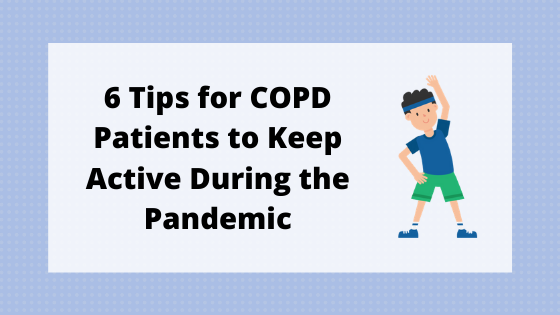
The past several months have been challenging for many people across the world. With the outbreak of the novel coronavirus (COVID-19), most of us are filled with uncertainty about our health and financial well-being. While many people have lost their jobs, older adults, especially those with chronic health conditions like COPD or diabetes, have had to drastically adjust their lifestyle to avoid getting sick.
Last week, we told you seven things that COPD patients need to know about COVID-19. This guide is a great place to start if you want to know the best way to deal with the coronavirus as a COPD patient. In it, you’ll find information about what exactly the new virus is and why it’s so important for respiratory patients to take extra precautions when it comes to social distancing, sanitation, and sheltering in place.

One important point we discussed in this article was staying active. Despite most of us being in our homes all day and night, exercise remains a key part of treating respiratory conditions like chronic obstructive pulmonary disease. However, contrary to popular belief, you don’t necessarily need to get out of your house in order to exercise effectively.
In this post, we’ll take a look at six tips you should know before exercising at home. While these can act as guidelines to get you started, it’s strongly recommended that you first speak with your doctor or pulmonologist to learn what exercise routines are best for you. In the meantime, if you have any questions for us, don’t hesitate to leave them in the comment section at the bottom of the page or fill out the contact form at the side of the page.
{{cta('43b79c5e-6bd6-4f02-ac27-2d038d20c146','justifycenter')}}
Practice Good Posture
Good posture is paramount not only for exercising, but for managing COPD symptoms in general. Posture simply means the way that you hold and carry your body throughout the day. Someone with bad posture may experience back pain, fatigue, or other adverse symptoms, while someone with good posture will avoid any unnecessary and excessive strain on their body.
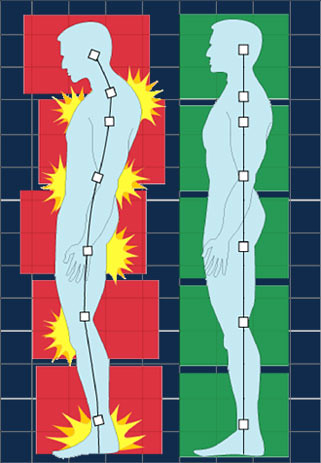
As we age, it becomes increasingly difficult to maintain a good posture. When we become weaker, we begin to reinforce bad habits that we’ve developed over the course of our life, so late adulthood is a great time to reevaluate the way we sit, stand, and even walk. According to this Harvard report, poor posture can lead to muscle weakness, spasms, and put stress on your neck and lower back. Over time, it can even impair your ability to exercise which is the very goal you’re trying to accomplish in the first place.
Fixing a bad posture is something that you’ll have to actively work at and it’s not something you can necessarily fix overnight. However, by taking things one step at a time, you’ll be able to reverse bad habits that you’ve developed over the course of your life.
Forward Neck
The first sign of incorrect posture is a forward neck. This happens when someone pushes their head and neck forward away from their center of gravity and usually develops in people who use their computer frequently. This also occurs more commonly in people who are hard of hearing because they find themselves leaning forward to hear a sound more acutely.
The key to fixing a forward neck posture is to strengthen your upper thoracic extensors. These are the muscles that help keep your head aligned with your shoulders. One way to do this is with chin tucks. Each morning you wake up, roll your shoulders back and drop them. Then press your chin gently backwards. Repeat this several times a day and you’ll notice your neck muscles getting stronger.

Another way to fix this posture is to change the way you sit at a desk. If you use a computer or laptop frequently, try raising it up so that it’s at eye level. If it’s below eye level, you may be tempted to bend over to view the screen. You can also try using a standing desk or using a chair that has support all the way up your back.
Postural Kyphosis
Also known as a “hunched” back, postural kyphosis is a leading cause of back pain, stress, and most relevant to COPD patients, breathing difficulties. While so many people struggle with a hunched back, it's very unnatural for our bodies to be in this position. It causes an enormous amount of stress in the spine, pinches nerves in the back, and compresses the lungs preventing us from getting a full breath.
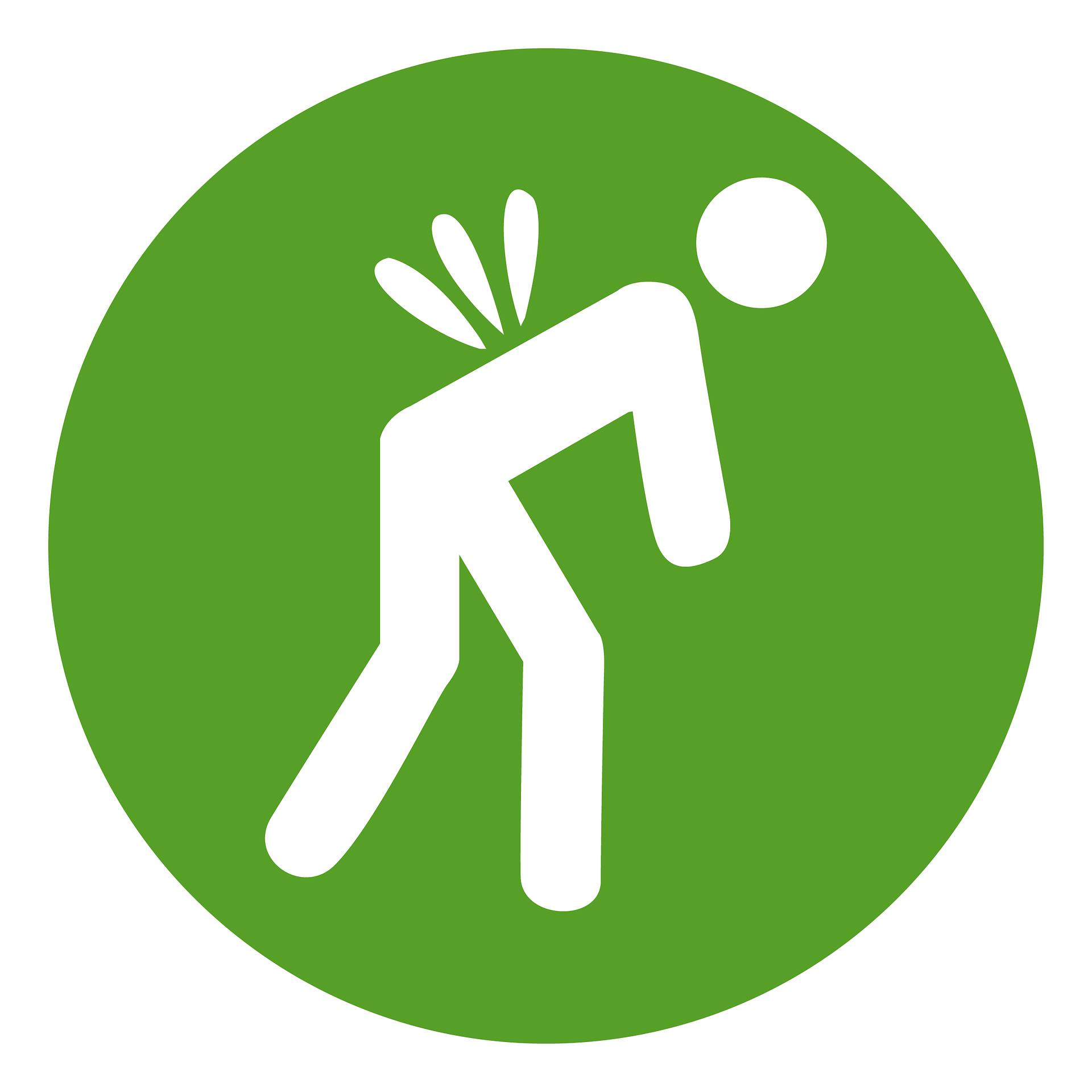
One simple way to fix this is to stand with your back against the wall. Ensure that your heels are as close to the wall as possible and hold your head up straight looking forward. Drop your shoulders and let them roll backward. You should feel your spine center and start to rest in a more natural position. If you notice your back starting to slouch throughout the day, practice this exercise to reset your posture.
Standing and Walking Posture
Unfortunately, the aforementioned tips won’t do you much good if you don’t apply them to the way you stand and walk as well. As we age, standing and walking can become difficult enough as it is due to conditions like osteoporosis or muscle weakness, so a poor posture will only make this more difficult. In general, the same rules apply as when you’re sitting like a straight back and your head being aligned over your shoulders, however, there are some additional points to take note of.
![]()
First and foremost, you should be using decent shoes that have good arch support and shock absorption. Tennis shoes are typically the best option but other types of shoes are an option if they follow these guidelines. Another way to ensure you have a great posture while walking is to act like there are balloons attached to your head and chest while your shoulders are able to drop backwards freely. This may feel awkward at first, but eventually you’ll develop a natural way of doing it.
Another way people develop poor posture while walking is if they carry heavy objects like backpacks, purses, or oxygen concentrators. While it’s recommended that older adults avoid carrying heavy objects, if you need to, make sure you’re doing it properly. If you use a backpack, make sure the straps are pulled tight enough that the majority of the weight is held as closely to your back as possible. Doing so will ensure that you don’t experience any unnecessary back strain.

If you’re a COPD patient who needs to carry oxygen with you while you’re out and about, it’s best to find a carrying method that won’t hurt your back. Portable oxygen tanks can weigh over 8 pounds and continuous flow oxygen concentrators can weigh over 15 pounds, so generally you’ll need to use a rolling cart or carry them in a specially designed backpack. Pulse dose oxygen concentrators, on the other hand, are much lighter (under 5 pounds) and can be carried on one shoulder without ruining your posture. Check out this great guide for finding the best portable oxygen concentrator for seniors or fill out the contact form at the side of the page and we’ll get back with you.
Practice Breathing Exercises
Once you’ve fixed your posture, practicing breathing exercises is a great next step towards staying active during the pandemic. As a COPD patient, breathing correctly is very important, and not unlike posture, it is possible to develop bad breathing habits throughout your life. We’ve discussed this topic in depth in a previous post, but if you want a condensed version, we’ll cover it here.
One of the biggest problems COPD patients face is something called “shallow” or “chest” breathing. This is a type of breathing that is primarily done through the use of intercostal muscles the muscles found in between your rib cage. This is a problem because it limits your air intake and it can be painful or difficult for someone with a chronic lung disease because it emphasizes the use of chest muscles which are often weak in these patients.

Alternatively, COPD patients should practice what’s called “deep” or “diaphragmatic” breathing. As opposed to using chest muscles, this type of breathing uses the sheet of muscle below the lungs called the diaphragm. Learning to master this type of breathing can be difficult, but it’s well worth it for someone who wants to breath more comfortably and freely.
Pursed Lips Breathing
Pursed lips breathing is a breathing exercise that’s used to make your breaths slower and more intentional. It’s also designed to give you more control which is ideal for people who want to improve their athletic performance or cope more effectively with respiratory ailments like cystic fibrosis or chronic obstructive pulmonary disease.
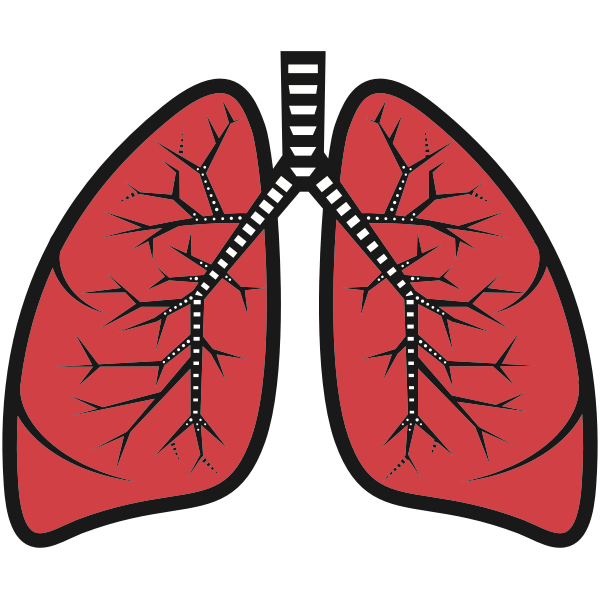
To practice pursed lips breathing, lie on your back or sit with your back straight. Drop your shoulders and try to eliminate tension within the body as much as possible. Inhale through your nose for 2 seconds letting your lungs fill with air. Then, purse your lips and blow out slowly for about 4 seconds. Continue to practice this exercise several times each day.
While this may seem like a rather simple and ineffective breathing exercise, studies have shown that it can significantly improve exercise tolerance, arterial oxygen, and breathing patterns, especially in those with declining lung function. This study even found that pursed lip breathing can reduce dynamic hyperinflation in patients with low peak expiratory flow (PEF). Another reason to practice pursed lips breathing is that it can calm your nerves and make you more relaxed. This can help relieve stress and anxiety which are common among COPD patients.
Coordinated Breathing
Breathing is part of what’s called the autonomic nervous system. What this means is that it’s a function that your body does without you having to think about it. Your heart rate, blinking, and your breathing rate are all controlled by the autonomic nervous system. Coordinated breathing refers to breathing that you consciously try to control while you’re exercising.
Whenever you lift a heavy object or do some type of strenuous exercise, you may notice that you tend to hold your breath for a second or two or otherwise alter your breathing in some way. While this may be harmless to some people, to someone with COPD, it could cause a significant amount of tension and stress to build up in the chest.
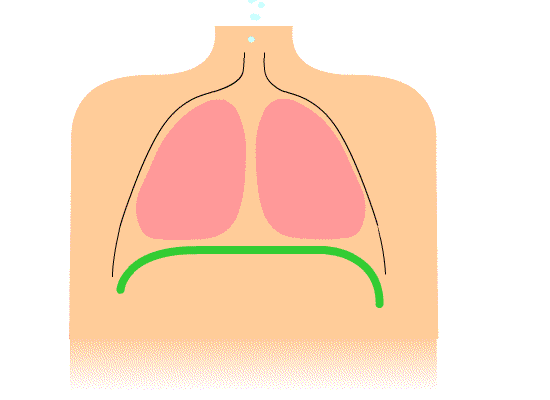
If you’re lifting a dumbbell or some other type of weight, for example, inhale slowly before lifting the weight and start exhaling as you lift the weight. Once you start lowering the weight back down, you can inhale again. This is not only done to help you get a rhythm going and prevent tension in the chest, but it can also improve the strength you gain from the training exercise. Once you master this technique, you’ll also notice that it allows you to recover more quickly from a workout so that you can get back to it the next day.
Diaphragmatic Breathing
The diaphragm is a very important muscle in the body. Unfortunately, many people develop bad habits throughout their life that prevent them from using this muscle effectively. If this happens, it’s imperative that you retrain your body to breathe in the most efficient and healthy way possible. This is even more imperative for COPD patients who frequently suffer from muscle atrophy (muscle wasting). Try the following to practice diaphragmatic breathing:
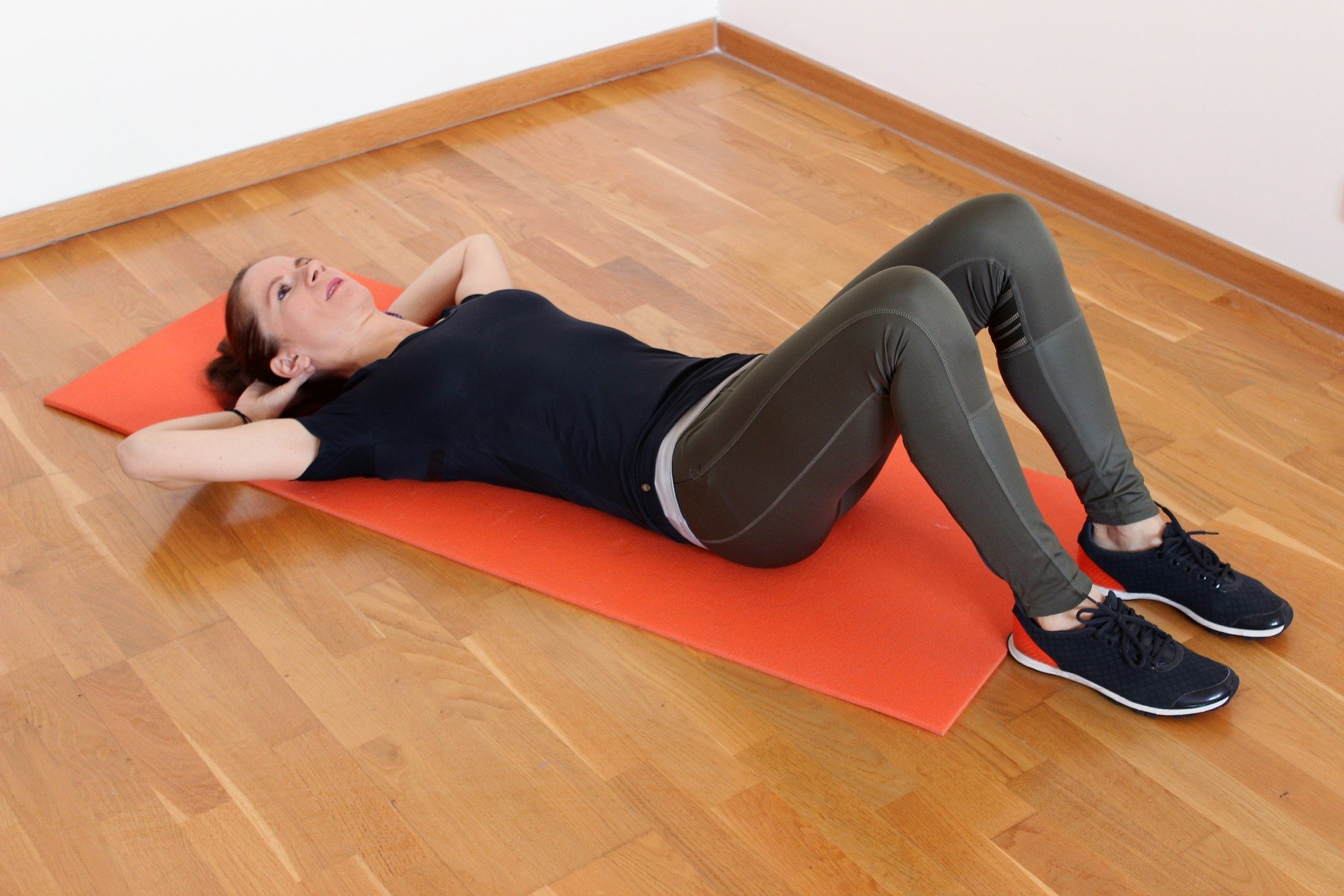
- Lie down on your back on the floor or on a bed. Relax your shoulders and put one hand on your stomach and the other on your chest.
- Inhale for 2 seconds through your nose. If you’re doing the exercise correctly, you should feel your stomach moving more than your chest.
- Slowly exhale with pursed lips and feel your stomach move back downward. Repeat this each day to improve the strength and coordination of your diaphragm.
Practice Endurance Improving Exercises
Lung function is a huge factor in determining your overall endurance. Many COPD patients are unable to run or walk long distances because of problems like low forced expiratory volume (FEV) and total lung capacity. However, by taking the time to create a plan for improving your overall endurance, you’ll be able to do more without adding to symptoms that you may be experiencing.

Typically, pulmonary lung function tests are done in your doctor or pulmonologists office. During this appointment, he/she will perform a number of tests including spirometry, plethysmography, or diffusion capacity tests and gather data about your lung function. Once this is done, your doctor will help you interpret the results and set you up with an exercise plan that best fits your needs. What’s more, you may even be able to track your progress at home using a lung function testing device provided by your doctor. In this case, you’ll be able to track your progress more easily and without having to leave your home.

Aerobic exercise or “cardio” exercise is what you will need to do in order to improve your endurance and lung function as a COPD patient. This includes things like walking, running, hiking, or any other type of activity that gets you moving. Don’t worry though, you won’t have to perform high-intensity exercises to experience the benefits. In fact, many patients are advised not to exercise too much if it will increase your likelihood of experiencing an exacerbation.
{{cta('b59df0c1-c4de-47a8-8e1c-0d33d4b414aa','justifycenter')}}
Walking
Walking is one of the most basic forms of aerobic exercise. And although it likely won’t raise your heart rate too much, it will do enough for you to see noticeable improvement if you stay consistent. When the weather is nice, it’s best to do some walking outside in a park or open space with clean air. However, due to current circumstances with COVID-19, it’s important to follow all your local regulations and wear a face mask. Use this guide by the Centers for Disease Control and Prevention (CDC) on how to wear a face covering correctly.
.jpg)
If you feel unsafe walking outdoors either due to the virus or the weather, there are plenty of options for walking indoors as well. Some COPD patients enjoy walking up and down the stairs for added exercise but you can also use a treadmill which makes it very easy to track how far you’re walking. If you want, you can even purchase a device like a Fitbit which will track exactly how many steps you’re taking in a day and help you set long-term goals that are more achievable.
Stationary Bike
Stationary bikes are another great option for at-home endurance training. They’re especially great for COPD patients because they allow you to do something a little more interesting than simply walking and it also works different muscle groups like the hamstrings, quadriceps, and the soleus and gastrocnemius in the calves. You also don’t have to deal with things like balance or the threat of falling over and getting hurt while on a stationary bike.
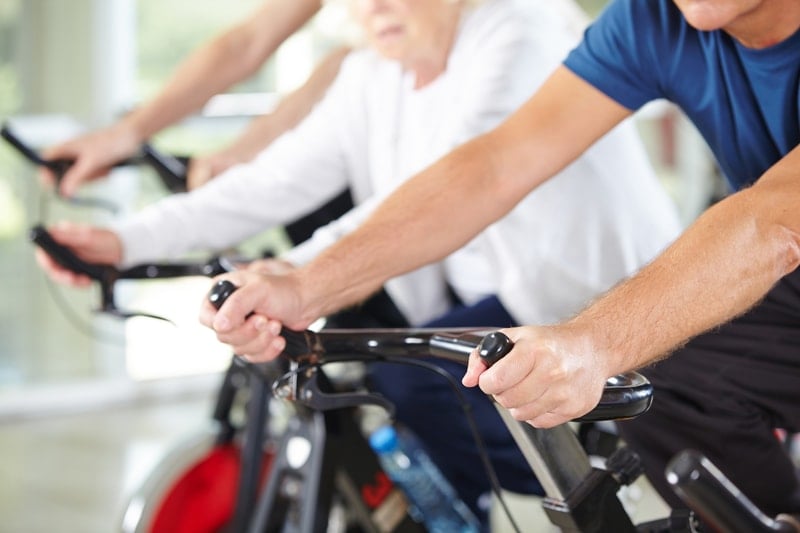
Tai Chi
Tai Chi is a long-standing Chinese martial arts tradition. While it’s been used for many purposes over the years, it’s commonly used by older adults and seniors as a form of exercise and meditation. We wrote a whole post on Tai Chi and it’s benefits, so check it out if you’re interested in learning more.
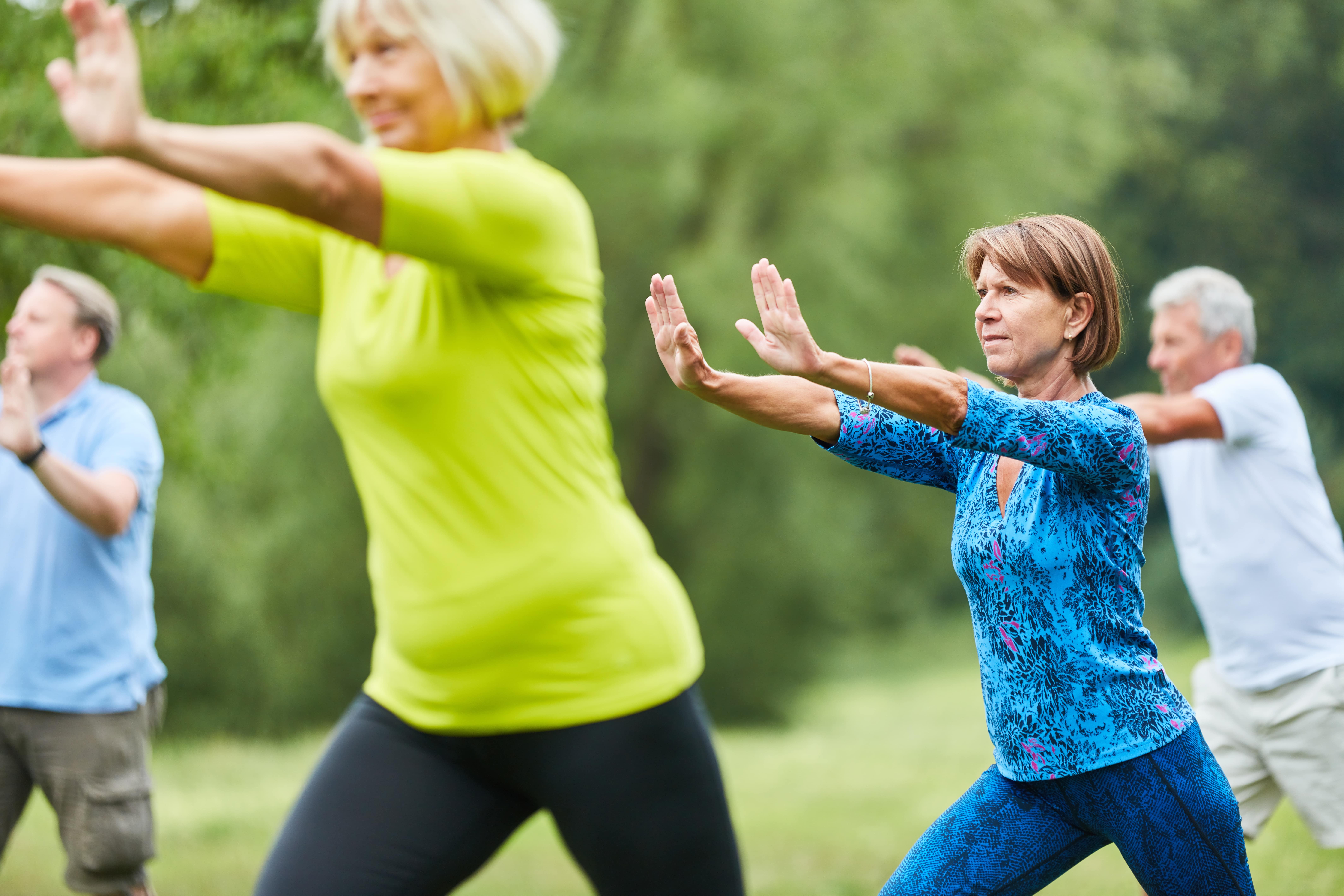
One of the main benefits of Tai Chi for people with lung conditions is that it allows you to tone your muscles, practice good posture and breathing, improve your endurance, and put your mind at ease all with one exercise. Tai Chi doesn’t involve fast-paced movements like other types of martial arts and it’s easy for beginners to jump into and start learning right away. According to COPD News Today, Tai Chi is an accessible, low-cost alternative to pulmonary rehabilitation.
Learn Strength Training Exercises
As aforementioned, muscle atrophy is a common occurrence in people with chronic obstructive pulmonary disease and other chronic lung conditions. According to this official publication, 40 percent of patients experience limited exercise capacity due to skeletal muscle loss in addition to pulmonary issues. This is often amplified by issues like oxidative stress, systemic inflammation, malnutrition, and hypoxemia.
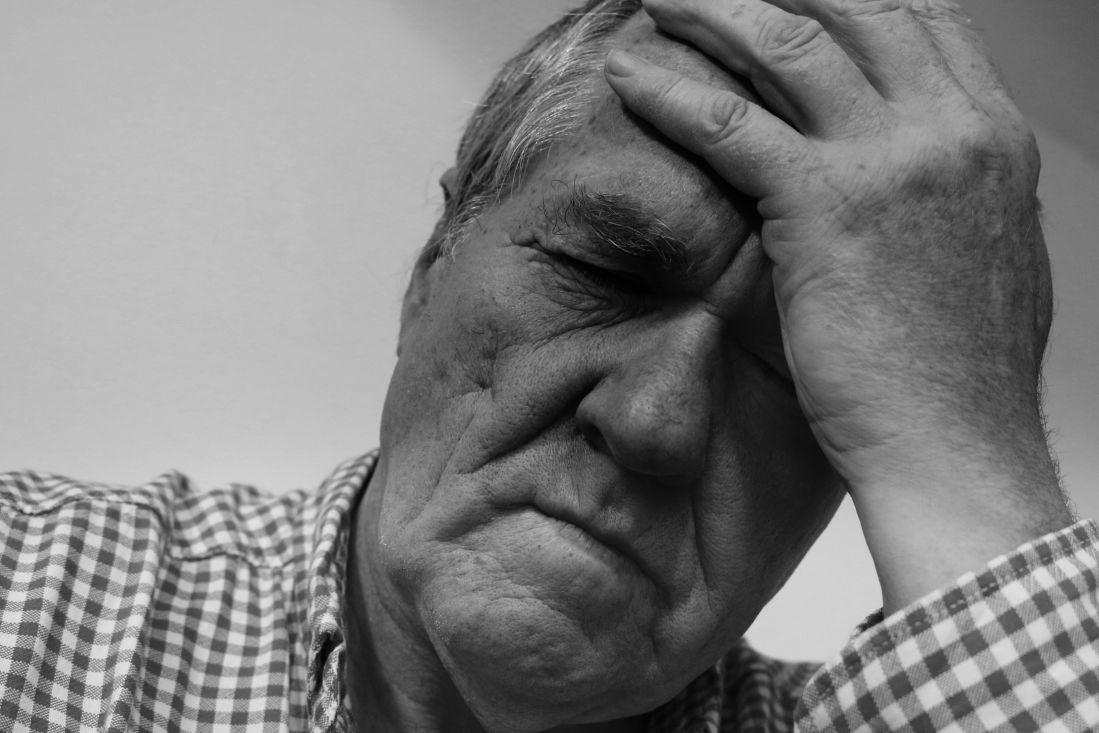
What this means for those with COPD is that it’s extremely important to not only focus on improving your strength and working each muscle group, but you also don’t want to be losing more weight than you’re putting on. On the other hand, you don’t want to be overweight either because this can lead to problems like obstructive sleep apnea (OSA) and increase dyspnea (shortness of breath).
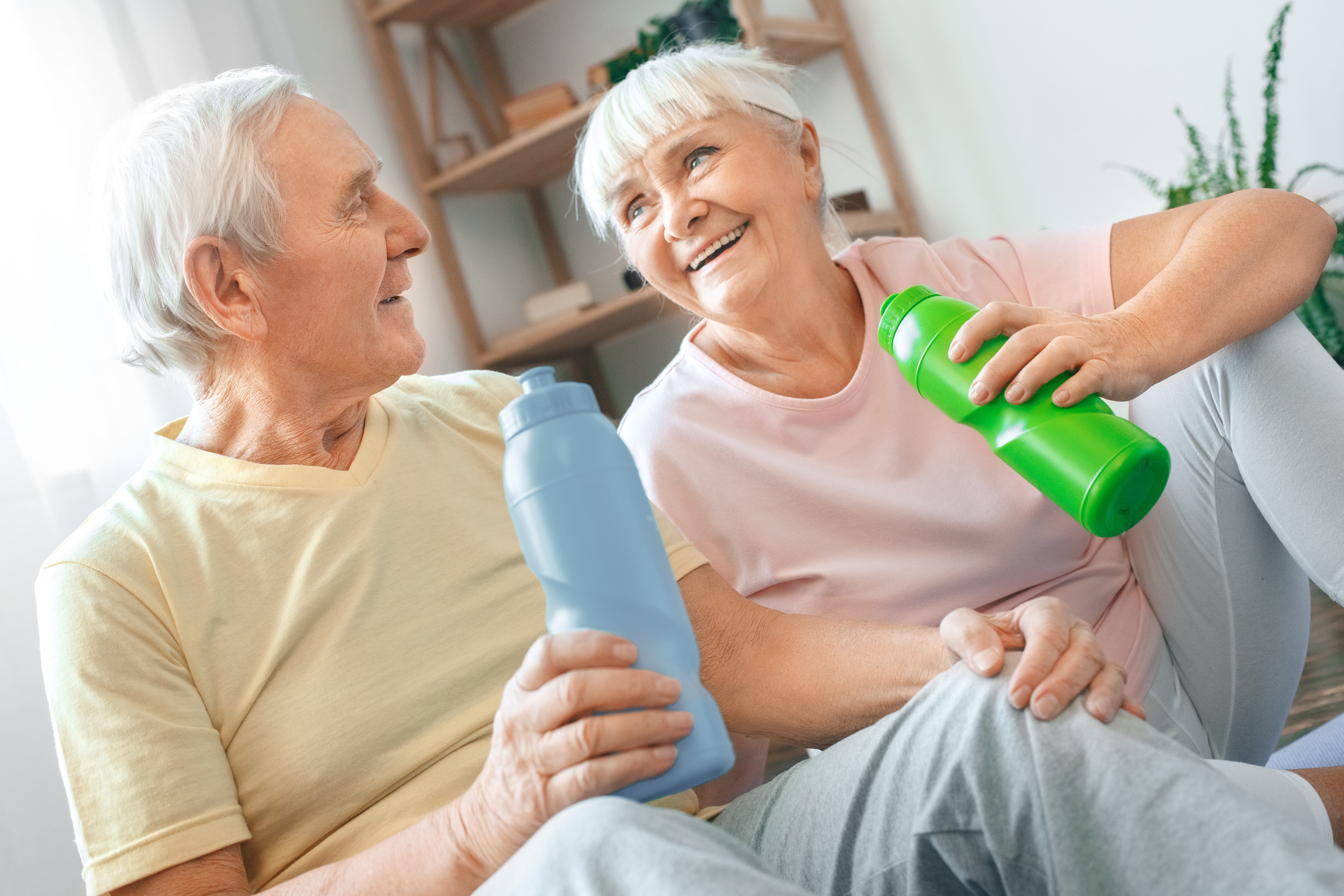
Much like endurance exercises, the strength training exercises you do don’t need to be high intensity. The consistency of your efforts is what will make the difference at the end of the day.
Weight Lifting
Resistance exercises are a key part of any COPD exercise program. Many patients may be intimidated by the thought of performing strength training with a chronic lung condition, but they should only be done under controlled conditions advised by your doctor. Since muscle atrophy can occur anywhere in the body, a full-body exercise routine is likely to benefit you most rather than one that targets a specific muscle group.
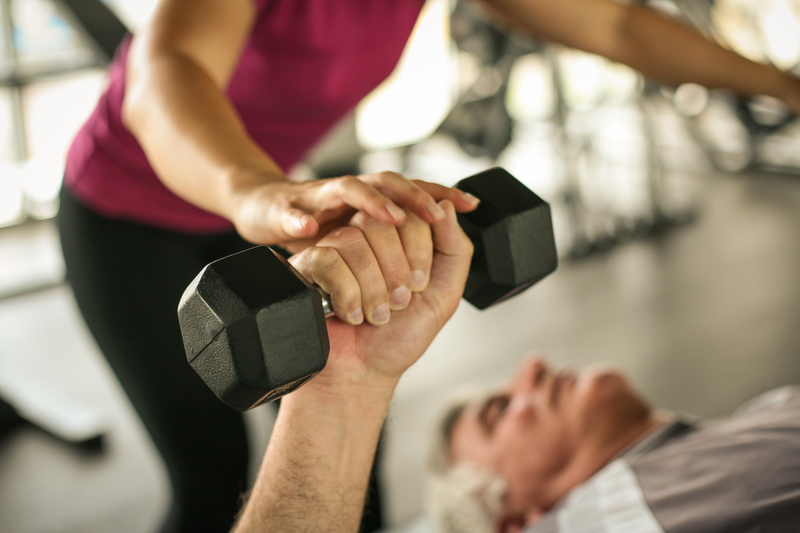
One concern many people will likely have is finding the right equipment to perform strength training while at home. If you normally have a gym, you probably don’t have weight machines around your home that you can use. In this case, you’ll have to use a mix of free weights, elastic resistance training, and body weight exercises. While not a lot is known about what exercises are most beneficial for COPD patients, Tom Storer, Ph. D. and former member of the Pulmonary Education and Research Foundation (PERF) board of directors, has put together a great guide for COPD patients interested in strength training.
Use a Portable Oxygen Concentrator
No matter what type of exercises you’re doing at home, one thing that can make your life a lot easier is the type of oxygen therapy device you’re using. A large portion of COPD patients are on oxygen 24/7 making it ineffective and difficult or near impossible to stay active. Luckily, there are alternatives to heavy and clunky oxygen tanks. Portable oxygen concentrators like the Inogen One G5 are lightweight, small, and easy to use, even when you’re up and moving around the house.
.png)
The G5 weighs in at just 4.7 pounds and it’s the size of a small handbag. This means you’ll be able to practice all the at-home exercise we mentioned previously without feeling restricted or confined to one space. Portable oxygen concentrators run on batteries and the G5 offers up to 13 hours of freedom on one charge. What this means is that you’ll be able to move around the house freely without your device being plugged into the wall or without long oxygen tubing that could be a tripping hazard.

Despite portable oxygen concentrators being easier to use, they are less expensive than alternatives like compressed oxygen and liquid oxygen. And since these are difficult financial times for many Americans, it’s best to have a long-term plan for managing your COPD symptoms. When compared side-by-side with there are far less costs associated with portable oxygen concentrators. While oxygen tanks need to be refilled regularly, POCs, will run for 5 to 7 years without needing any additional financial investments.
.jpg)
Last but certainly not least, portable oxygen concentrators are much safer than oxygen tanks. While concentrators remove oxygen from ambient air, oxygen tanks store oxygen at high pressures. This makes them significantly more prone to explosions or other safety issues. Portable oxygen concentrators also use pulse dose technology which only delivers oxygen when a breath is detected. If you happen to drop your nasal cannula, the flow of oxygen will stop, reducing the likelihood of a fire.
At Home Pulmonary Rehabilitation
Pulmonary rehabilitation programs are designed to educate COPD patients about their lungs and train them on proper techniques for exercising safely and effectively. Under normal circumstances, you would visit a specialist who will walk you through everything you need to know, but with the coronavirus being a clear and present danger, most pulmonologists will advise against in-person pulmonary rehab programs — fortunately, there are alternatives.

Thrive ePulmonary Learning is a fully online disease management course designed to help COPD patients understand their condition and implement proven breathing and exercise techniques that can reduce symptoms like breathlessness, chest pain, and coughing. By joining, you’ll have access to the following:
- One-on-one instruction from registered respiratory therapists, nutritionists, and counselors
- Exclusive access to your own support
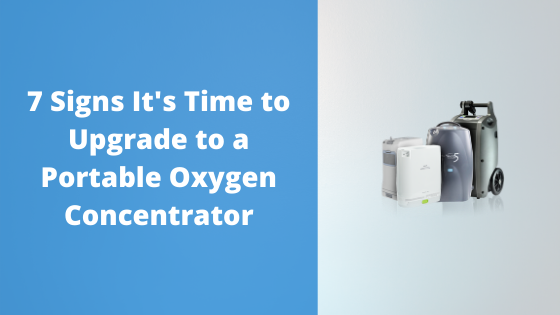
Life has a tendency to throw some curveballs from time to time. Whether it be a simple change to our daily routine or something more serious like the coronavirus pandemic that we’re currently dealing with, it’s important to always stay on your feet and be prepared for the worst, but hope for the best.
If you’re a COPD patient, chances are, you spend a lot of time thinking about how you can improve your daily treatment regime and better prepare yourself for unexpected events in life. From an outsider's perspective, this may seem like an easy task, but if you’re someone who’s actually coping with chronic respiratory symptoms, you know it’s anything but that.
One decision many respiratory patients will likely need to make at one point or another is whether or not to upgrade to a portable oxygen concentrator from some other oxygen device such as an oxygen tank or even a home oxygen concentrator. You’ve likely heard good things about portable oxygen concentrators, but you may be concerned about the cost and ensuring your oxygen needs are met.
In this post, we hope to settle a few of your doubts by providing you with 7 signs it’s time to upgrade your oxygen tank, liquid oxygen tank, or stationary oxygen concentrator to a portable oxygen concentrator. If you have any unanswered questions after reading this post, please fill out the contact form at the side of the page and our respiratory specialists will get back to you as soon as possible.
{{cta('fa8abc2a-1e88-4fa3-82fd-1cb5b9ed43b2','justifycenter')}}
You Feel That Your Freedom is Being Restricted
Potentially the most common reason people feel the need to upgrade to a portable oxygen concentrator is that they feel their freedom is being restricted. Simply put, if you’re relying on outdated technology for your supplemental oxygen therapy, you’re not going to be able to go as many places and do as many things as you would if you had the newest oxygen therapy machines like portable oxygen concentrators.

For starters, portable oxygen concentrators are battery operated devices. What this means is that you won’t have to refill them like you do with oxygen tanks or liquid oxygen tanks, and you won’t have to keep them plugged into a wall outlet like stationary oxygen concentrators. Most modern POCs use lithium-ion batteries which are powerful and can power your device for hours on end without needing to be charged.
Mobile oxygen concentrators like the Inogen One G5, for example, can run for up to 13 hours on one charge. For most people, this is plenty of time to be out and about all day without ever having to worry about your oxygen supply. However, even patients who have higher oxygen needs can take extra batteries if they feel the need to.

Another way portable oxygen concentrators offer more freedom than other types of supplemental oxygen machines is that they are lighter and more compact. An average pulse dose portable oxygen concentrator weighs under 6 pounds which is light enough to carry on your shoulder or back without having any problems. In terms of size, most POCs are about the size of a lunch box, however, continuous flow portable oxygen concentrators tend to be bigger and bulkier.

Lastly, all portable oxygen concentrators are approved by the Federal Aviation Administration (FAA) for in flight use. The FAA is an agency of the United States Department of Transportation that oversees commercial aviation regulations. The FAA has deemed portable oxygen concentrators safe for in-flight use because they are small, lightweight, and contain no pressurized oxygen. This means you’ll be able to fly all over the world without being denied access to a flight.
You Aren’t Achieving Your Full Potential
Everyone, no matter their age or physical ability, has goals and aspirations. Ultimately, in order to achieve these goals, you’ll need to be focused on what you’re trying to accomplish rather than your health and general well-being. Studies have shown that people with COPD and other chronic respiratory ailments tend to spend a significant amount of time thinking about their condition which can lead to depression and other mental health conditions.
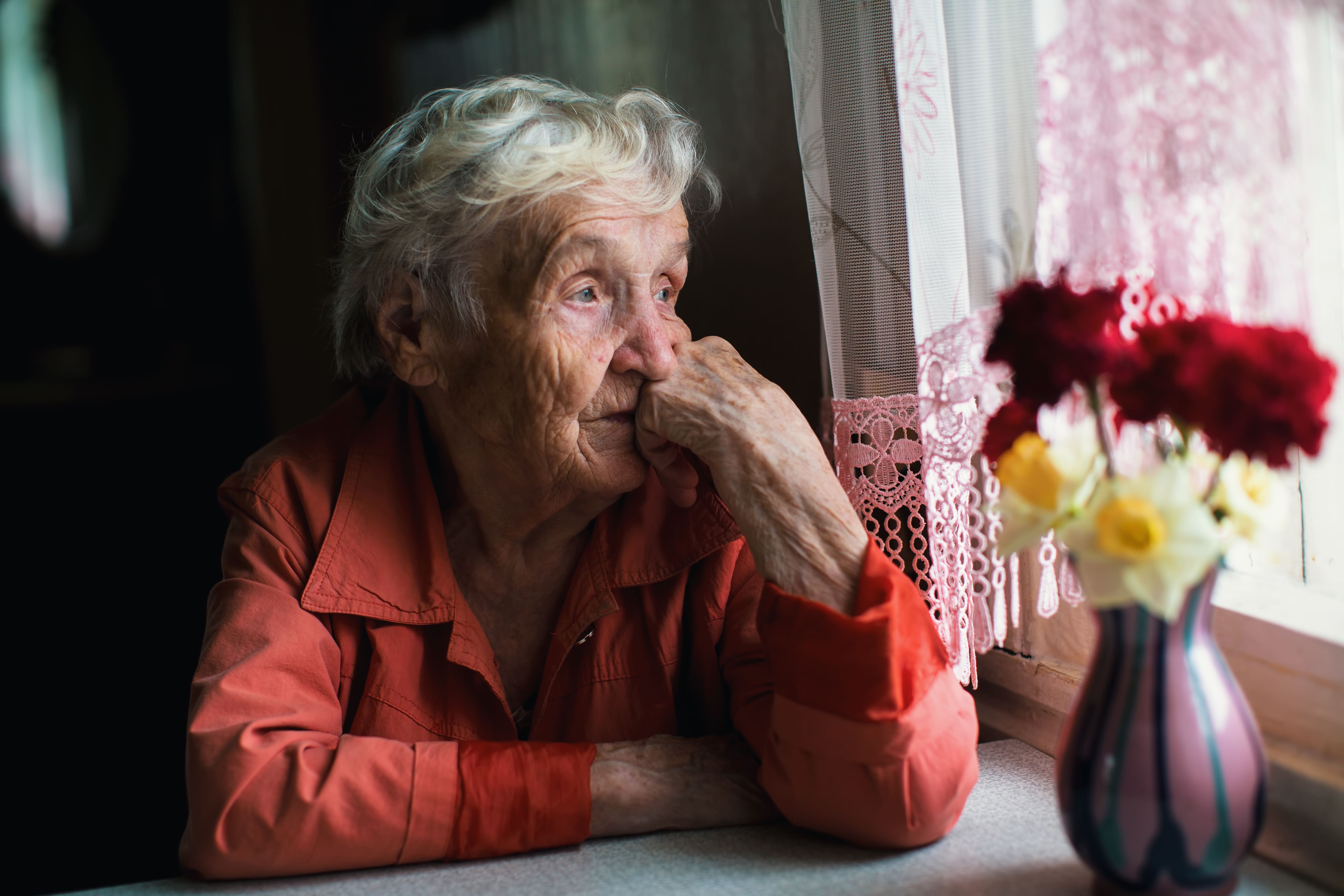
One study found that, with COPD-related depression, patients experienced greater fatigue, shortness of breath, and COPD symptoms. Another study found that patients experiencing depression were 77% more likely to be hospitalized and 48% more likely to be sent to the emergency room due to COPD-related symptoms than their nondepressive counterparts.

The most important thing to draw from these studies is that COPD-related depression not only takes your focus away from your goals, but it can manifest itself physically through COPD symptoms. With a portable oxygen concentrator, you’ll have a reliable source of oxygen wherever you go which will keep your pulmonary condition stable and keep your COPD symptoms in check.
You Feel Financially Insecure
These are difficult financial times for many people across the world. Due to mandatory lockdown orders across the country as a result of the coronavirus, many businesses have been forced to shut their doors until further notice. Just in the last week alone, the Department of Labor reported that more than 3.28 million people have filed for unemployment insurance in the last week alone.

While we can’t possibly predict how long these issues will last, it’s safe to assume that it’s best to play it safe and begin working on a long-term financial plan for you and your family. In this plan, you should make sure you have enough money put aside for health-related expenses such as COPD checkups and emergency room visits.
While we by no means want you to immediately go out and buy a portable oxygen concentrator, it is something to consider if you’re concerned about your long-term financial well-being. Think of it this way, if you’re currently using an oxygen tank, you’re likely spending around $5 each time you need to refill it. In a year, this is about $1,825 which is about as much as a portable oxygen concentrator. However, portable oxygen concentrators last, on average 5 to 7 years while offering significantly more freedom than an oxygen tank.
.jpg)
If you went an alternate route and refilled your own oxygen tanks, you would need to purchase a homefill oxygen station. These cost just as much or more than a portable oxygen concentrator, so when you put things into perspective, a portable oxygen concentrator is a much better option for long-term financial well-being. With that being said, it’s important to ensure you have enough financial stability to buy one in the first place. If not, LPT Medical has a lot of great financing options available to you. Simply get in touch with our respiratory specialists and we can go over the details.
{{cta('b59df0c1-c4de-47a8-8e1c-0d33d4b414aa','justifycenter')}}
You Feel Unsafe With Your Oxygen Device
Let’s face it, supplemental oxygen devices are not safe to use by any means. Oxygen tanks have been used for many decades, but you’ve likely heard horror stories of them exploding or causing fires in peoples’ homes. One of the main reasons they’re so dangerous is that they contain pressurized oxygen. As such, they need to be handled very carefully if you don’t want them to be a threat to yourself or anyone around you. Another problem with compressed oxygen are leaks. Oxygen is what’s called an oxidizer. What this means is that anything it’s exposed to becomes more flammable.
-min.png)
All things considered, liquid oxygen tanks are not much better. While they don’t contain pressurized oxygen like normal oxygen tanks do, they do have the potential to expand if the equipment isn’t ventilated properly. What’s more, exposure to the cold temperatures required to keep oxygen in its liquid state can lead to severe burns and like compressed oxygen, there’s still a chance oxygen could be exposed to your surroundings.
Portable oxygen concentrators, on the other hand, do not have any of these safety concerns. Because POCs draw in ambient air and remove the oxygen, there is no compressed oxygen inside the unit. So, if you happen to drop it or bump it on accident, it won’t blow up or cause a leak. Another reason POCs are safer than oxygen tanks is because they only put out oxygen when they detect a breath. This is called pulse dose technology and all though it’s not intended as a safety mechanism, it can prevent oxygen from being exposed to surfaces unintentionally if you happen to drop your nasal cannula for some reason.

Last but not least, portable oxygen concentrators are safer simply due to their size and weight. Even portable oxygen tanks can weigh well over 8 pounds and they’re made of metal. If one of them happens to fall on you or a loved one it could pose a serious health risk. However, POCs have a very small form factor and they typically weigh under 5 pounds making them much easier to handle. Even if one does happen to fall on someone or bump into them, it likely won’t cause any harm.
You Want to Simplify Your Routine
While we don’t always like to admit it, life can be complicated sometimes. Between work life and home life, it can be difficult to balance things if you don’t have some sort of organized plan. Unfortunately, if you’re chronically ill and suffer from a condition like cancer, COPD, or diabetes you have one more thing to worry about. As a COPD patient, this could mean having to manage a strict diet, exercise routine, and most importantly your oxygen therapy routine.

Although you do need to juggle a lot as a COPD patient, that doesn’t mean each chore needs to be difficult. For example, you may be able to find a company that can deliver pre-cooked meals that contain all the nutrients you need each week. This way, all you need to do is simply heat them up and your meals are taken care of.
If you want to simplify your oxygen therapy routine, you may choose to invest in a portable oxygen concentrator. Instead of having to refill your oxygen tank each day or carry an extra tank with you, a POC will allow you to go wherever you please knowing that you’ll always have access to high purity medical-grade oxygen. You can make your supplemental oxygen therapy even more convenient by doing your research and buying a POC that matches your needs and lifestyle.
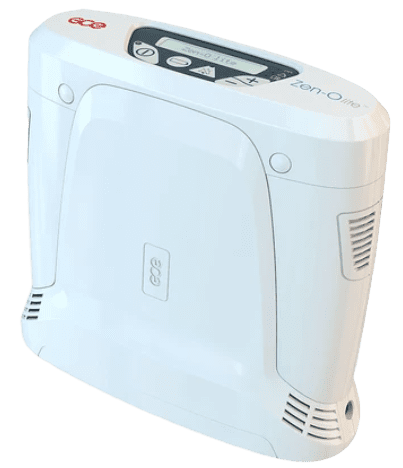
Your Pulmonologist Recommends a Change
Another reason to invest in a portable oxygen machine is if your primary care physician or pulmonologist recommend a change. Due to the fact that portable oxygen concentrators offer the same medical-grade oxygen as tanks, most pulmonologists will no longer see a need for any other type of oxygen delivery device. The one time that you’ll likely need to use an oxygen tank is in the hospital after being admitted for a COPD exacerbation or some other health event. This is referred to as “high-flow short-term oxygen therapy” and it’s only advised under the supervision of a medical specialist.
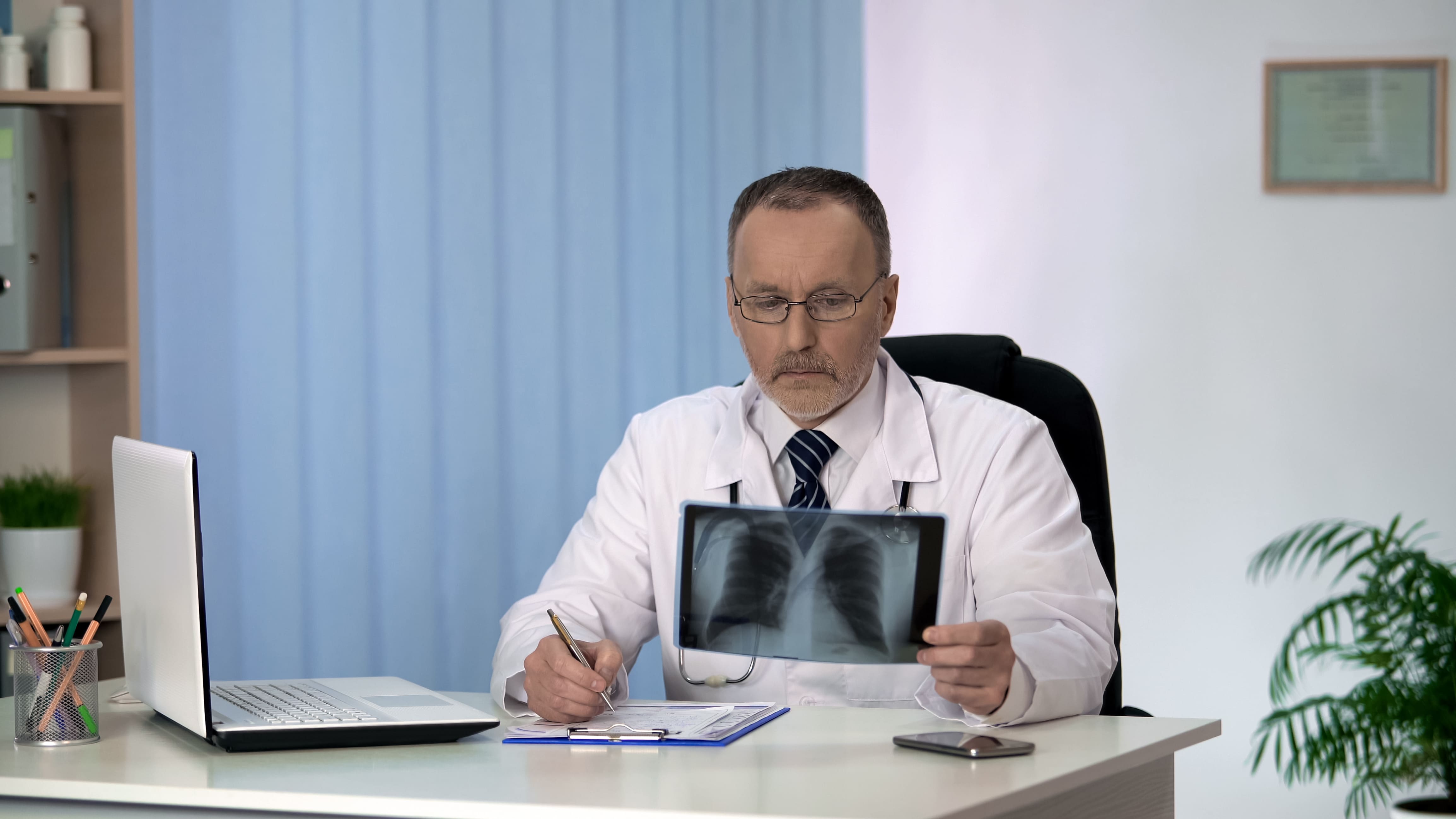
If your doctor does recommend portable oxygen concentrators, it will likely be for the reasons we’ve discussed previously. Oxygen concentrators are much safer than oxygen tanks, they’re easier to operate especially when you’re out of the house, and they provide a more reliable source of oxygen. If you’re not sure what type of oxygen device your pulmonologist recommends, it may be worth it to reach out to him/her and ask. They may have something specific in mind that will best suit your wants and needs.
You Find a Great Deal
The final sign that it’s time to upgrade to a portable oxygen device is if you find a great deal on one. Unfortunately, when it comes to oxygen tanks and liquid oxygen tanks, the prices are pretty standard and set in stone. This means you’re likely not going to be able to find a great deal on one even if you wait several months to a year.

Alternatively, you could opt for a portable oxygen concentrator which always have great deals running to help you save money. Here at LPT Medical, most of our portable oxygen concentrators come with a carrying case, AC and DC power adapter, a 3-year warranty, and access to Thrive ePulmonary workshop, an official COPD training course that provides you with helpful information for managing your disease as well as full 24/7 support from trusted medical professionals. We’re also happy to offer a lot of great portable oxygen concentrator sales on both new and refurbished units.
Conclusion
With the escalation of the COVID-19 pandemic, financial insecurity has become a major concern for many Americans. If you’re considering purchasing a new oxygen therapy device, it may be time for you to upgrade to a portable oxygen concentrator such as the new Inogen One G5, Caire FreeStyle Comfort, or Inogen One G4 which offer the same great benefits of an oxygen tank or liquid oxygen tank but they’re far lighter, smaller, and easier to use. Not to mention they last longer and are a more financially wise choice for long-term oxygen therapy.
We understand that choosing a portable oxygen concentrator is not easy by any means. There are many units on the market and you may have trouble determining which one fits your needs. That’s why our respiratory specialists here at LPT Medical are always here to help. To get all your questions answered, simply fill out the contact form at the side of the page and we’ll get back to you as soon as possible. What’s more, you can stay tuned to our blogs for more helpful tips on managing COPD and choosing an oxygen therapy device.

There's always so much to look forward to during the summer months: warm weather, lush trees, and all kinds of outdoor activities. It's a beautiful season, and for many of us it provides a much-needed rest from the cold, harsh winter weather.
However, many of the things that make the summer months so pleasant are at odds with COPD. If you don't take the right steps to protect yourself from heat, pollen, and humidity you might find that the summer weather makes your COPD symptoms even worse.
Luckily, many people with COPD have found ways to beat the summer heat and minimize their symptoms during the hottest season of the year. In this guide, we'll help you learn what to look out for and give you plenty of simple, effective solutions for managing your COPD during the summer months.
{{cta('fa8abc2a-1e88-4fa3-82fd-1cb5b9ed43b2','justifycenter')}}
Why the Summer is Challenging for People with COPD
Heat

Spending time in the hot, summer sun can be a major energy sapper for anyone. When you have COPD, however, high temperatures can be particularly hard on your body.
Hot weather can quickly make you dehydrated and even cause bronchospasms, which constrict your airways and make it hard to breathe. Hot air alone can make you feel short of breath, and dehydration from the heat can thicken mucus in your airways and make it even more difficult to breathe.
When your body is fighting a disease like COPD, the muscles in your chest and respiratory tract have to work harder to help you breathe, especially when you are physically active. When you're out in the summer sun, the heat puts even more strain on your body and can make you feel exhausted very quickly.
That's because, when you're baking in the sun, your body has to work particularly hard keep your internal temperature at a healthy 98.6 degrees. That means sweating, panting, and using extra energy to help your body cool down fast.
This can make you feel exhausted and fatigued after even short bouts in the heat, and can be dangerous if you don't take steps to protect yourself. In extreme cases, you could get heat stroke or experience an exacerbation of your COPD symptoms.
One study from John Hopkins University found that people with COPD are more likely to experience reduced lung function, increased symptoms, and exacerbations when exposed to temperatures above 90 degrees Fahrenheit. They were also more likely to require rescue medicine and medical intervention when exposed to extreme heat.
Humidity
|
|
| Image courtesy of Jenny Downing on Flickr |
Have you ever stepped outside on a hot, humid day, taken a deep breath, and felt like the wet, heavy air was difficult to breathe? Extreme humidity during the summer can have that effect on most healthy people, and it can be an even bigger problem for people who have COPD or other respiratory problems.
Humidity tends to peak during the summer months, and the sweltering heat makes it all that much more of a problem. Breathing hot, humid air just isn't easy or comfortable for most people, and if you have COPD, it can make it very difficult to breathe.
However, humidity affects people, including patients with COPD, in different ways. While studies show that the optimum level of humidity for people with COPD is usually about 40 percent, individual preferences for and reactions to humidity vary widely from person to person.
One of the things that makes humidity problematic for many people with respiratory problems is the fact that it tends to trap smog and other toxic particles that contribute to air pollution. It also allows harmful microbes like mold, fungi, and dust mites to thrive, which can cause significant respiratory irritation.
Because of this, air quality in the summer tends to be poorer than other times of the year, especially on the hottest, most humid days. That's why doctors and other health professionals recommend that people with COPD carefully plan their time outdoors and take extra precautions to avoid making their symptoms worse in the summer.
Humidity and worsened air quality in the summer can take a huge toll on your energy and ability to breathe if you're not careful. Make sure to regularly check your local weather report or airnow.gov for the day's heat, humidity, and air quality so you can plan and prepare your days accordingly.
{{cta('b59df0c1-c4de-47a8-8e1c-0d33d4b414aa','justifycenter')}}
Pollen

Along with increased smog and air pollution, the summer air brings with it another major respiratory irritant: pollen. It's one of the most common triggers for allergic reactions that affect the respiratory tract, and at least ten to thirty percent of people worldwide suffer from these types of allergies, known as allergic rhinitis.
If you suffer from allergies and COPD, exposure to pollen can cause a variety of symptoms, including sneezing, wheezing, and increased mucus in the respiratory tract. Allergies can also cause your lungs and airways to become irritated, swollen, and inflamed, which can increase chances of infection and make it even more difficult to breathe.
These allergic reactions stack on top of already existing symptoms and can make your COPD even worse. That's why it's important to do everything you can to reduce allergens in your home and reduce your symptoms when they cannot be avoided.
Techniques for Managing Your COPD This Summer
When you have COPD, it's important to protect yourself from extreme weather and take care when doing any activities in the summer heat. Luckily, there are a lot of things you can do to protect yourself and your lungs from the temperature, humidity, and poor air quality during the summer.
In this guide, we're providing you with a huge list of tips and ideas for staying cool, healthy, and active this summer. You'll see that, with a little thought, planning, and prevention, you can find a way to enjoy all your favorite summer activities without letting it take a toll on your breathing.
How to Manage Hot Summer Days with COPD

Managing the extreme heat of the summer when you have a disease like COPD requires a bit of extra planning and preparation. If you spend too much time in the heat without proper protection, it can worsen your symptoms and leave you dehydrated and fatigued.
The following section will give you a variety of tips and ideas for keeping safe and cool during the hottest days of the season. Using these techniques, you can find a way to enjoy all your favorite summer activities without risking your health and wellness.
Schedule Time Outdoors During Cooler Parts of the Day
During the height of the summer, the daytime weather just gets too hot to bear. On these days, going outside anytime near midday, when the temperature peaks, can be risky.
But as long as you keep tabs on the daily weather forecast it's possible to plan around the heat. That way you can always stay indoors during the hottest parts of the day, and then plan outdoor activities for when the temperature is more mild.
If you limit your time outside to cooler times like the early morning and late afternoon, you will have more energy and less difficulty managing your COPD symptoms. You'll be able to better regulate your body temperature, breathe easier, and have better physical endurance.
Go Indoors When Necessary

When it's bright and sunny and there's fun to be had outside, it can be hard to force yourself to take it easy. But when the temperatures are extreme, it's completely okay and necessary to pace yourself and take breaks from the sun.
When you plan to spend time in the heat for any extended period of time, make sure you have an air-conditioned, indoor, or shaded area to retreat to when needed. Make it a habit to drink plenty of water and take regular, planned breaks so your body doesn't have a chance to get too overheated or fatigued.
Even healthy people often don't realize that they're suffering from heat exhaustion until it's too late, which is why it's so important to be prepared. When you have COPD, the risks of heat exhaustion are even greater, and even spending short times in extreme temperatures can cause your symptoms to get significantly worse.
Dress for the Heat
When you're outside in the summer heat, your first line of protection from the sun is your clothing. Make sure to wear lightweight clothing and choose light colors that won't absorb the sunlight.
Clothes that are thin and loose-fitting are best at keeping you cool because they allow air to flow through and won't stick to your skin when you sweat. Wide-brimmed hats can also be surprisingly effective at keeping your face and neck cool.
Drink More Water than Usual

It can sometimes be difficult to remember to drink enough water on normal days, but on hot, summer days it's absolutely necessary to stay hydrated. Dehydration alone can make your symptoms worse when you have COPD, but combined with high heat and humidity it can be dangerous and make it very difficult to breathe.
The summer heat makes your body lose water more quickly and require extra fluids to stay healthy. You'll have to increase the amount of water you drink from what you're used to in order to compensate for this loss.
Whenever you leave the house or spend time outside, make sure to bring a large bottle of water along so you won't get dehydrated. If you're going to be out in the heat for an extended period of time, make sure you have access to extra water and an air-conditioned space to cool down when necessary.
Don't Over Exert Yourself
Physical activities that are easy under normal circumstances can be difficult or exhausting when the sun is beating down. That's why it's important not to get discouraged if you find yourself having less endurance during the summer.
Even if you find the summer heat makes you unable to do as much as you are usually able to, don't push yourself too far. But don't use the heat as an excuse to give up on your exercise plan or other activities you enjoy, either.
It's important to stay active at all times of the year, and you can always move your plans indoors or make other adjustments when the heat is wearing you down. You might find it helpful to break up your exercise into smaller chunks, take more breaks throughout the day, and give yourself more down time to recover in-between activities.
Spend Plenty of Time in Air-Conditioned Spaces
The John Hopkins study on the effects of heat on people with COPD confirms that cooler air is not only more comfortable, but is also healthier for people with the disease. Spending too much time in the heat can cause worsened symptoms in both the short and long term, and increase the chances of exacerbations and hospitalizations.
Extended time in the heat can also increase your risk of illness and symptoms if you are overweight, elderly, or have another chronic disease like diabetes or heart disease. These illnesses are often associated with COPD, and may make the summer heat even more harmful to your body.
If you have an air conditioner at home, make sure it gets regular service and stays working properly during the summer. If you don't have air conditioning or you have an older, inefficient unit, consider investing in a new one or getting window AC units for the rooms in your home that you use the most.
If you don't have AC, try to go out and spend the hottest times of the day somewhere that does have air conditioning. You might go to a friend or family member's house, the library, or another public indoor space.
Get a Portable Air Conditioner
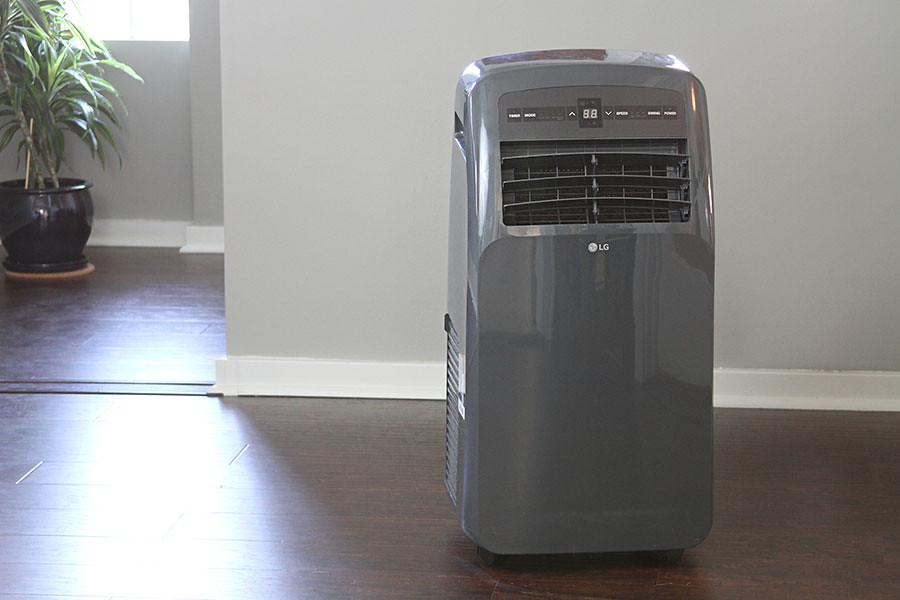 |
| Image courtesy of Best Digs |
Just like many people use a space heaters to warm up small rooms in the winter, you can use a portable air conditioner to cool down in the summer. You can use one in your home to cool a single room and save money on whole-house AC, and you can also take it with you on-the-go.
A portable AC unit is especially handy at work, where you don't have control over the thermostat. Especially if you have a partially enclosed area, like an office cubicle, a portable air conditioner can be very effective at keeping you cool without forcing your coworkers to turn up the office AC.
Use a Buddy System
If your COPD is very severe or you are recovering from an exacerbation, it might be a good idea to recruit a friend or family member to help you stay safe and healthy during the summer. Just having someone call and check up on you a couple times a day can help you avoid heat-related problems and get help when you need it.
When you are exhausted or ill from being in the heat too long, it can make you feel tired and confused to the point that you don't realize you're in danger. Sometimes it takes someone else checking in with you to notice the signs of heat-induced illness and realize that you need to go inside and cool down.
A buddy system is a support system that will allow you to feel more secure and ask for help and supplies when you need them. If your windows get stuck, your AC unit isn't working properly, or any other problems crop up, you can always ask for advice or assistance whenever someone checks in.
How to Manage Summer Humidity with COPD

Keeping out of the heat can be as simple as staying indoors, but avoiding humidity is a bit more tricky. When the weather outside is humid, it can be very difficult to keep it from making the air in your home damp and humid as well.
Most doctors recommend keeping the humidity levels in your home under 60 percent, because anything higher can encourage mold growth. For people with COPD, most doctors recommend an optimum humidity level of 40 percent, although individual preferences may vary.
Luckily, there are steps you can take and devices you can buy to keep your home from becoming a damp, musty swamp during the summer. The following section will give you a variety of ideas and techniques you can use to protect yourself from the humidity.
Vent Home Appliances Outdoors
Some common home appliances like dishwashers, washing machines, and stoves can significantly increase the humidity levels in your house if you're not careful. But if you make sure to properly vent these appliances, you can keep your home's humidity levels low.
Dishwashers and clothes dryers often already have ducts installed to vent humid air outdoors. However, sometimes these ducts can become clogged with dust and lint and need cleaning.
If you notice that your home gets humid when you run the dishwasher or dryer, you might want to get the air ducts checked to make sure they're clean and working effectively. If your dishwasher and stove don't have outside vents, you can turn on the stove fan or open a nearby window when they're running to help vent the moist air.
{{cta('b59df0c1-c4de-47a8-8e1c-0d33d4b414aa','justifycenter')}}
Vent the Room When You Shower

Anyone who's taken a hot shower knows how humid and sticky it can make the air in the room. It's a common source of increased moisture in many people's homes, and it can be particularly problematic for people with COPD.
Without proper ventilation, running a hot shower produces extremely humid air that can encourage mold growth and increase humidity in other rooms in your home. Luckily, most places in the US have strict building codes for bathrooms that require a window or a fan-powered vent to allow you to vent the humid air outside, instead.
Before you shower, make sure to open a window or run the vent fan so the humid air doesn't build up in your house. If you find that the humidity still bothers you or you experience increased breathlessness while showering, using cooler water or installing an extra vent can help.
Get a Dehumidifier for Your Home
Most people are familiar with humidifiers, and many use them during the winter to add moisture to the bothersome, dry air. However, many people are unaware that you can also get dehumidifying devices to pull extra moisture out of the air during the hot, humid seasons.
There are many different types of dehumidifiers to choose from and they come in a variety of shapes and sizes. What kind you should get depends on how humid the air in your house gets and how large of a space you need it to work for.
There are many small, affordable dehumidifiers that work in smaller rooms and spaces. These are great for bedrooms, offices, and other small areas that you spend a lot of your time in. You can even get a portable dehumidifier if you think you will need to carry your dehumidifier from room to room often.
Although it can get quite expensive, you can also get a whole-house dehumidifier that attaches to your house's main HVAC ventilation system. These large devices filter moisture out of all the air that flows through your air ducts and is the most effective way to make your home less humid.
Run the AC
Even if you don't want to install a whole-house dehumidifier, an efficient AC unit is often enough to do the trick when the humidity is mild. Air conditioners remove a certain amount of moisture from the air as part of their normal air-cooling process, and it can be an effective way to reduce the overall humidity in your home.
However, when the humidity gets very high, a regular air conditioner probably won't be enough to keep you comfortable. AC units can only scrub so much moisture from the air, which is why having a good dehumidifier is important if you want more control over the humidity in your home.
Check Weather Reports and Plan Accordingly
Your local daily weather report should include a variety of information about the temperature and humidity levels. If you keep track of the forecast, you can plan your week around the days that are most humid.
Sometimes the best way to avoid worsened symptoms is to just stay indoors as much as possible on very hot, muggy days. Keeping your doors and windows shut will keep the air in your home as dry as possible and also keep out pollen, mold, and smog.
If you have a dehumidifier, daily weather reports will help you know when to turn it on before your house gets unbearably humid and you notice your symptoms acting up. Running your AC along with your dehumidifier is even more effective, and it's the best way to stay cool and dry during the most uncomfortable parts of the summer.
How to Manage Summer Irritants with COPD

Along with the heat and humidity, summer brings a greater risk of respiratory irritation from pollen, mold, and smog. That's why it's important for people with COPD to monitor and prepare for poor air quality during the summer months.
The following tips and techniques will help you protect your lungs from air pollution and other irritants both outdoors and in your home. By taking these steps, you can reduce your allergy symptoms, prevent respiratory irritation, and make it easier to breathe this summer.
Check Air Quality and Pollen Reports
There are many air quality factors you have to take into account during the summer when you have COPD. Pollen, mold, smog, and other respiratory irritants can worsen your symptoms and make it more difficult to breathe if you don't take steps to avoid them.
Luckily, local news stations and other organizations release air quality reports and allergy forecasts every day to help people like you. You should always check the day's air quality index (AQI) before planning outdoor activities and stay indoors if the outlook is not good.
The AQI rates air quality on a six-point scale from good to hazardous, and you can check it here at airnow.gov. If you have allergies, you should also keep an eye on the daily allergy and pollen report, which you can check at pollen.com.
Get a High Quality HVAC Air Filter for Your Home
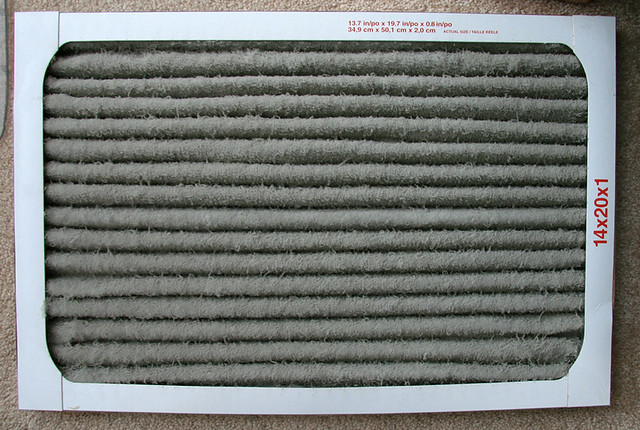 |
| Image courtesy of Ivy Dawned on Flickr |
Even when you're indoors, you can't totally escape the effects of the dust, pollen, and mold that the summer weather brings. That's why choosing a high-quality HVAC air filter, and replacing it regularly, is important for managing COPD symptoms in the summer.
Air pollution and other irritants come in through your windows and vents and cause you to experience worsened symptoms indoors. Pollen, mold, and dust from outdoors can also hitch a ride on you and your pets, sticking to shoes, clothes, and hair.
When you go inside, all of these irritants get transferred to your carpets and furniture, where they collect and build up. Then they kicked up into the air as you go about daily activities, worsening your indoor air quality, inflaming your lungs and airways, and making it more difficult to breathe.
The best way to combat the pollen, dust, and mold that circulate through your house is to get a high-quality air filter that catches pollen, mold, dust, and other particles that could aggravate your COPD. It's important to choose carefully and look at the filter's specifications before purchasing, because some filters remove many more types of irritants than others.
Clean Carpets, Rugs and Furniture Often

All of the air pollutants, pollen, and dust that come in from the outdoors tend to settle and build up in your carpet, couches, drapes, and other places. That's why it's important to keep your floors, furniture, and other surfaces clean, especially when allergens and air pollution are more prevalent.
Regular vacuuming, dusting, and sweeping is one effective way to remove respiratory irritants that have settled on surfaces in your home. It keeps these particles from building up, inflaming your lungs, and making it hard to breathe.
If you have a choice, hard flooring is much better than carpet when it comes to keeping dust, pollen, and other lung irritants at bay. Getting rid of rugs, drapes, and other fabrics that attract and collect particles can help improve your symptoms and the air quality in your home.
Change Clothes and Shower Often

When you spend time outdoors, mold, pollen, and other lung irritants cling to your clothes and hair. To avoid tracking these harmful particles and allergens int


 So we can find the best portable oxygen concentrator for your needs!
So we can find the best portable oxygen concentrator for your needs!





